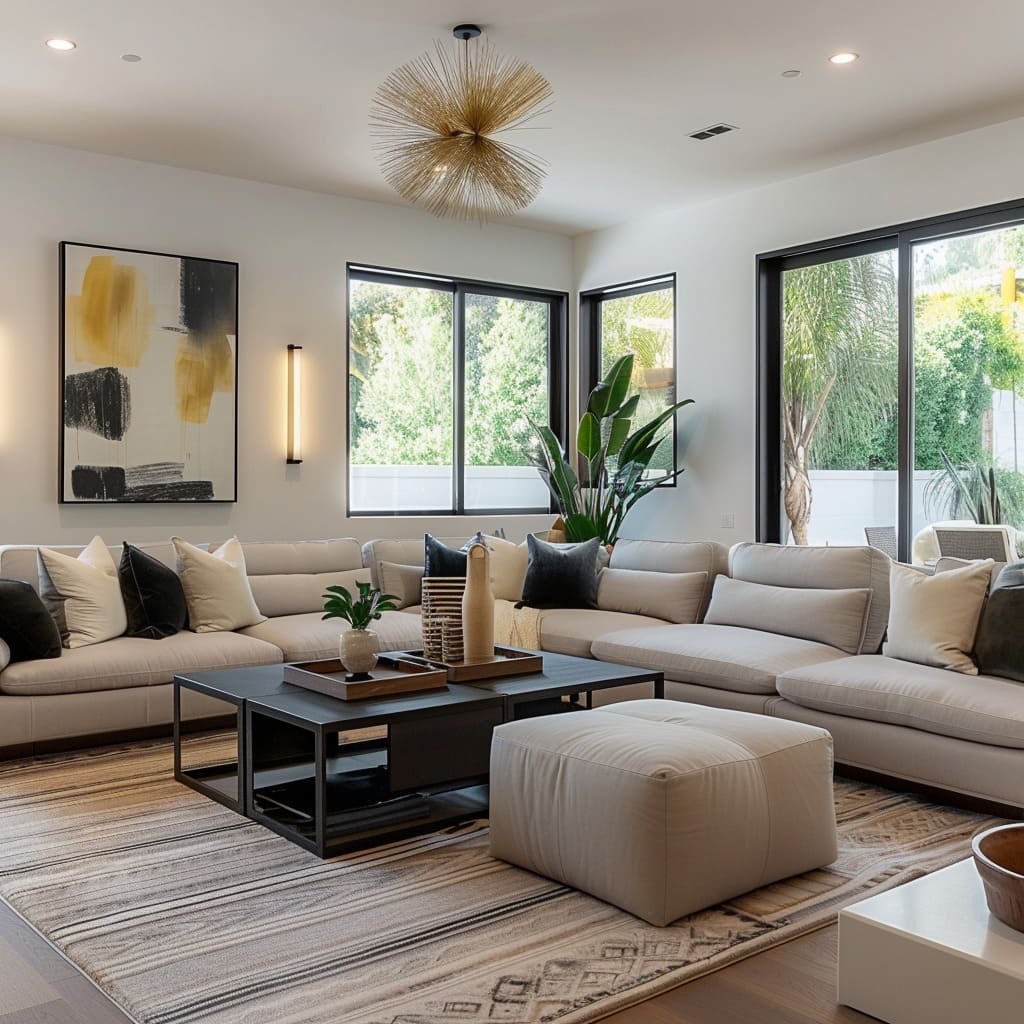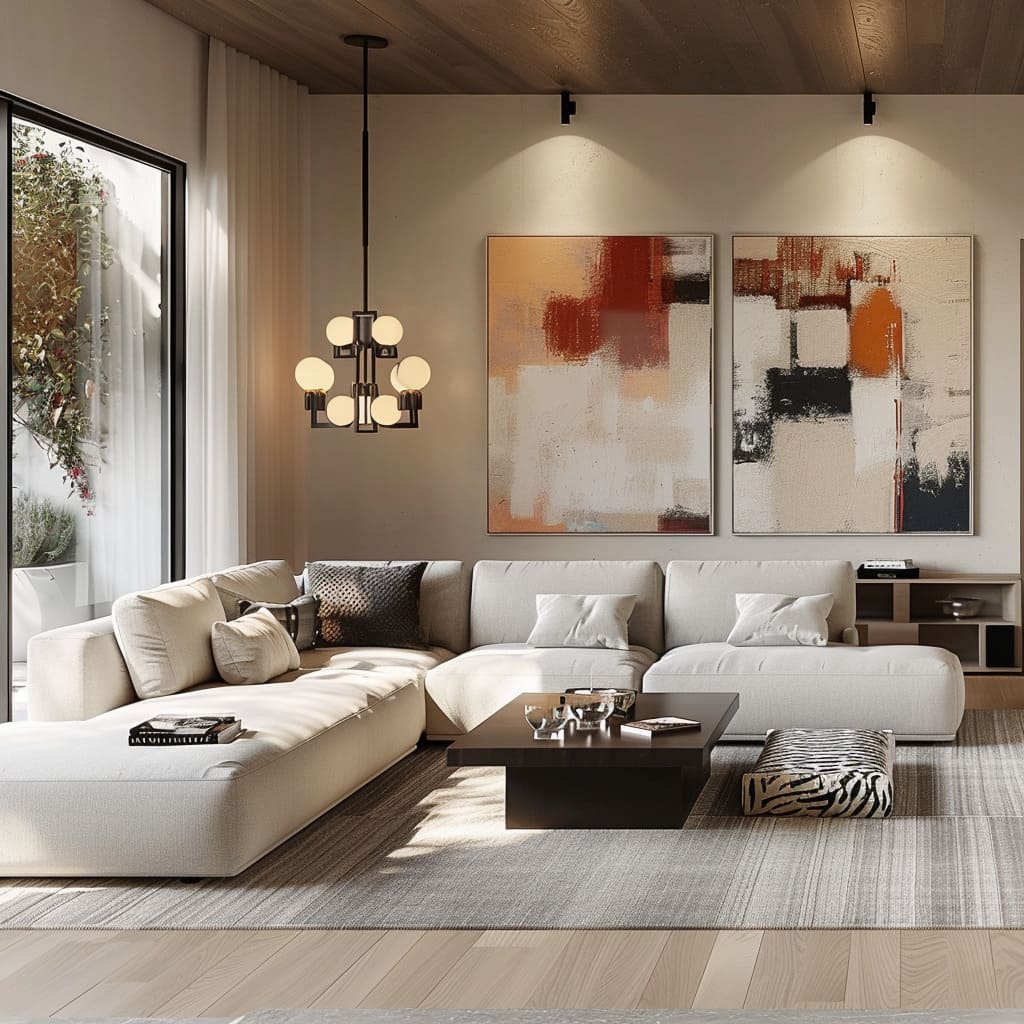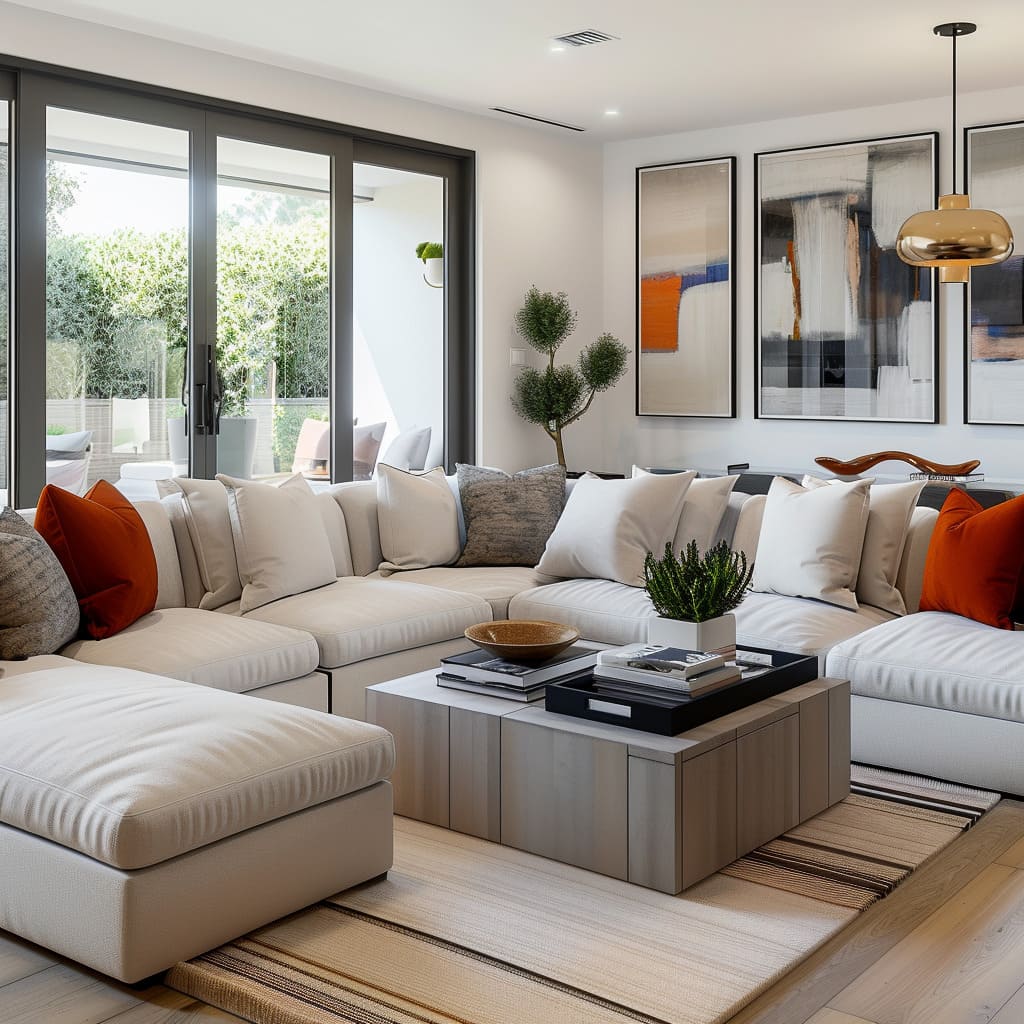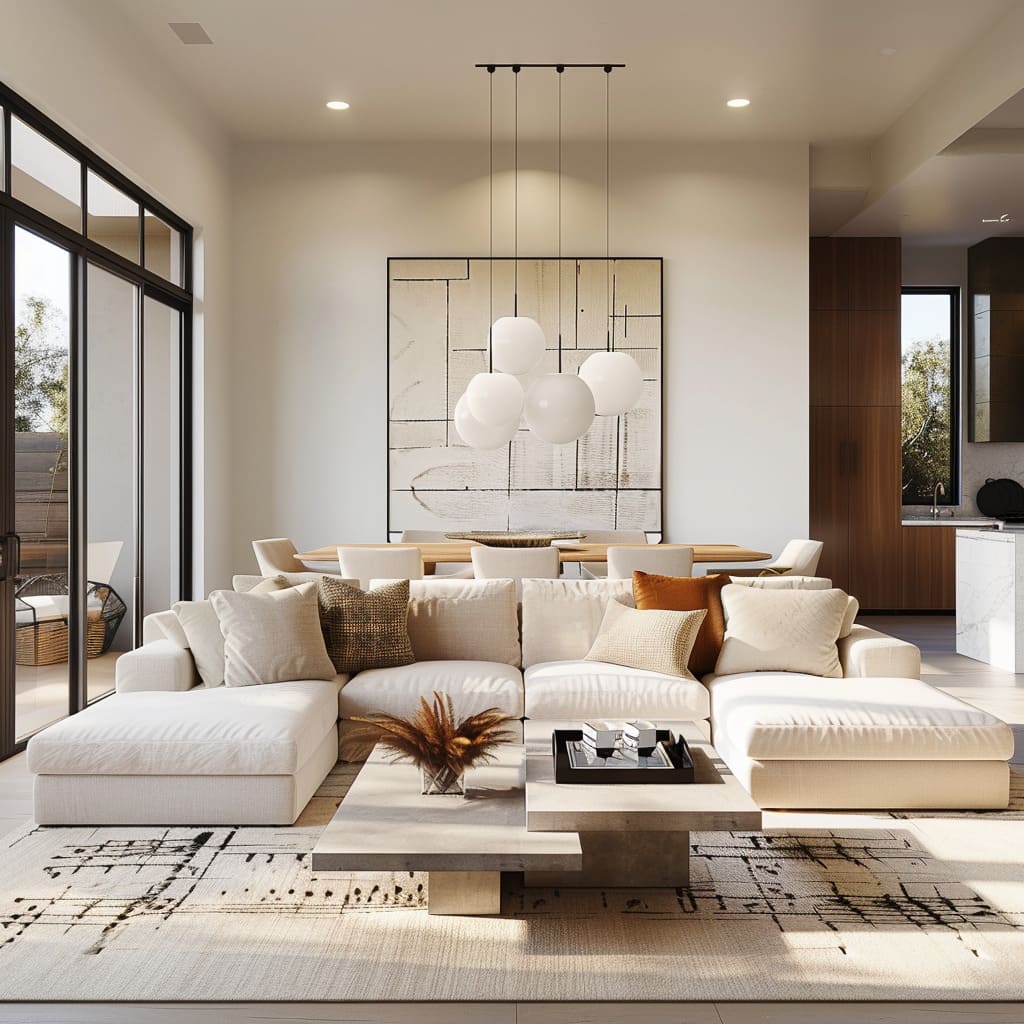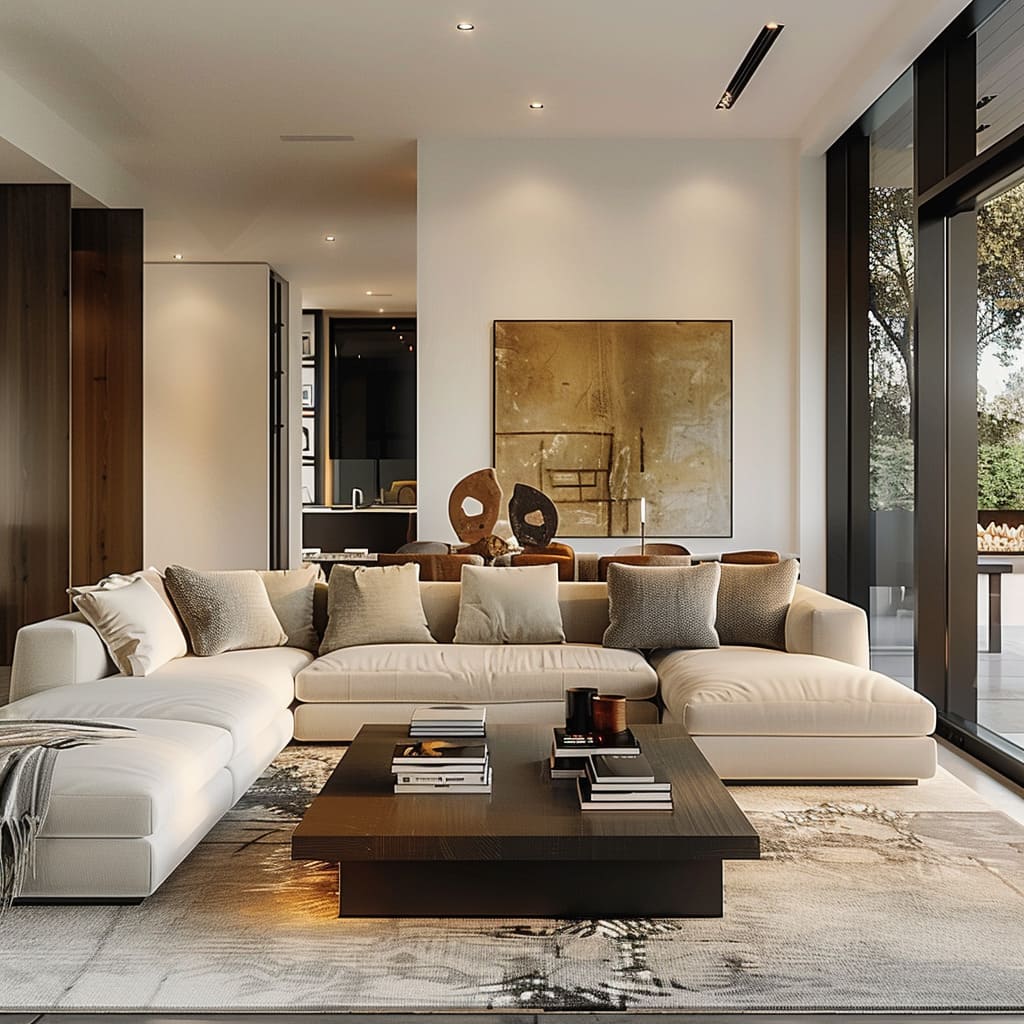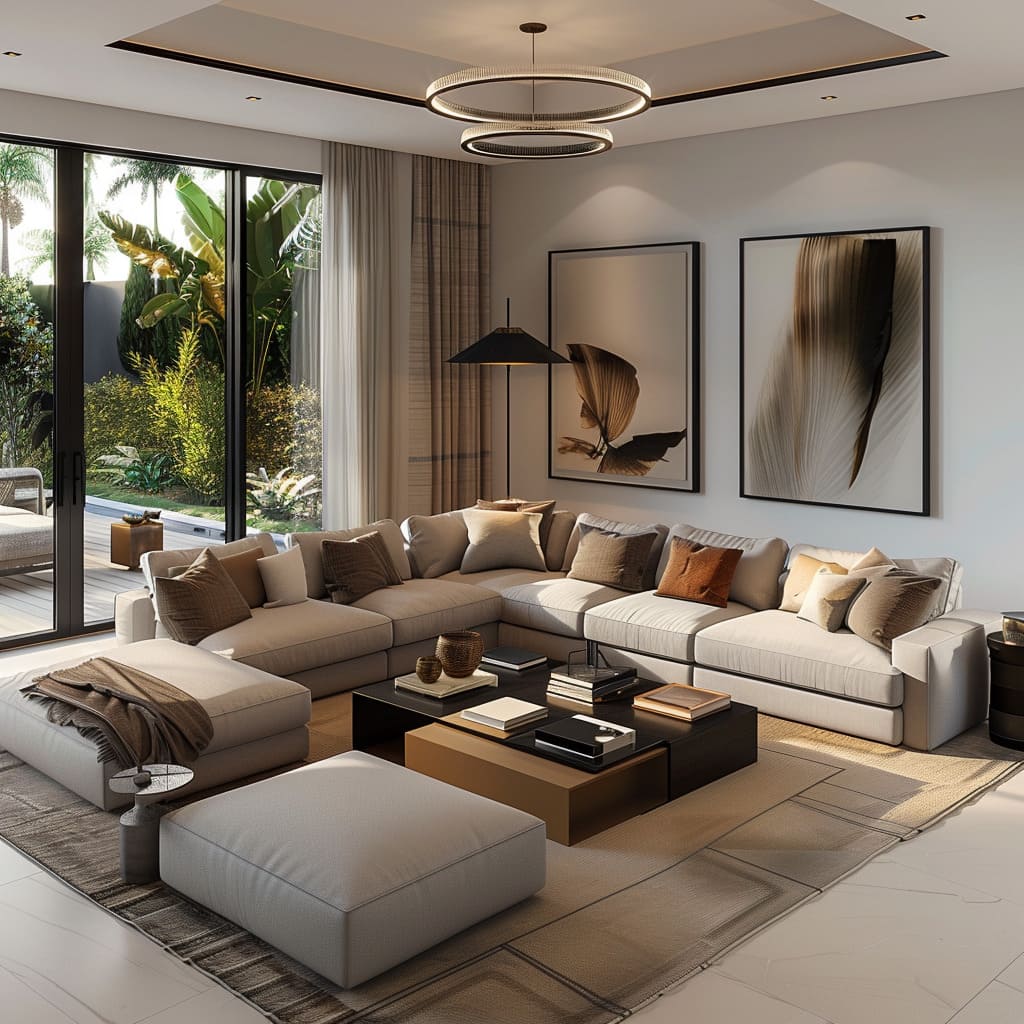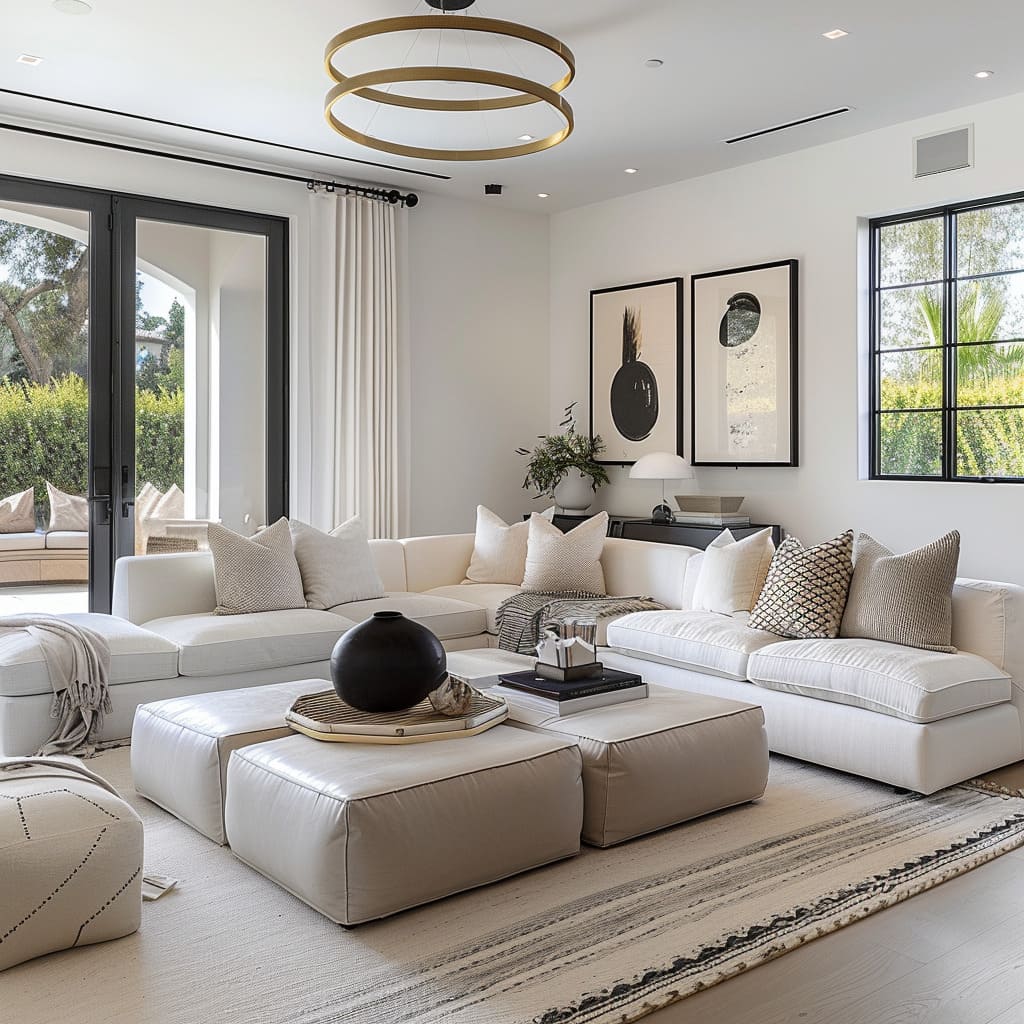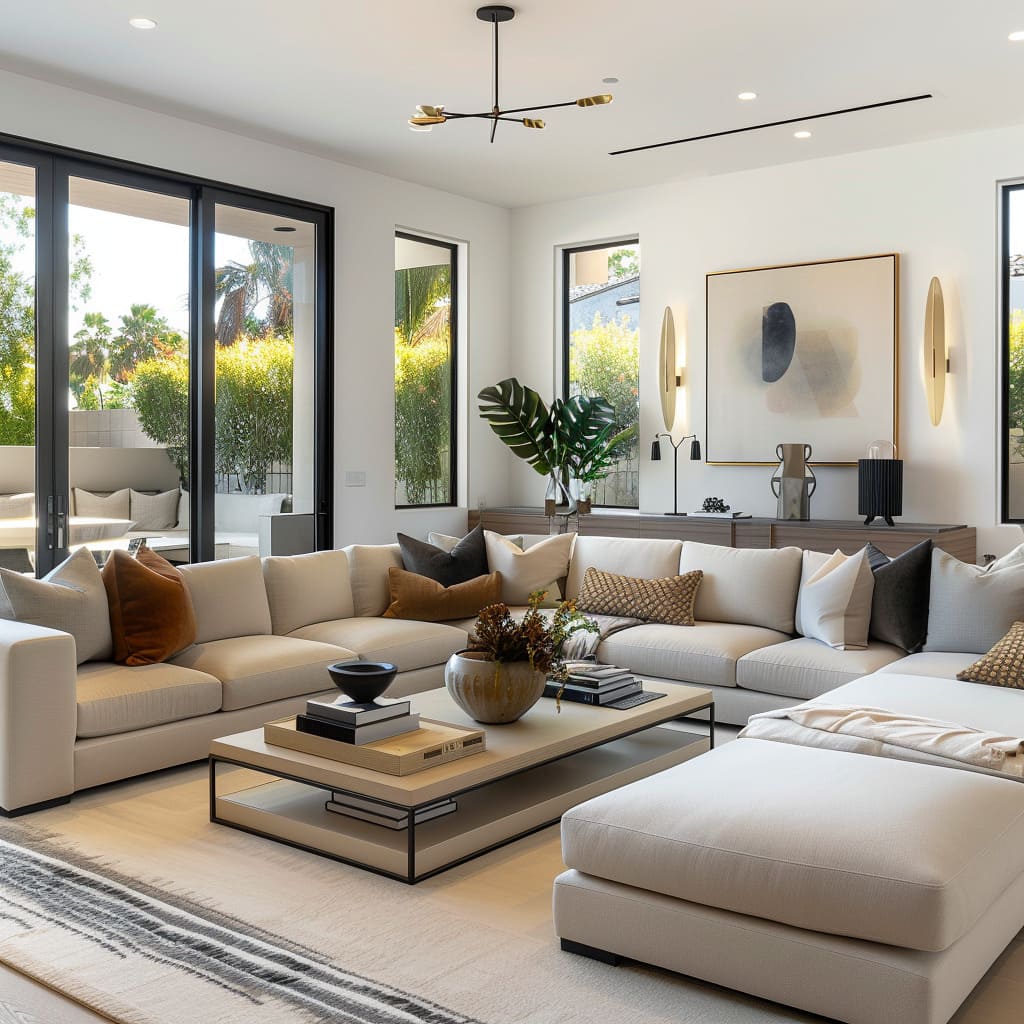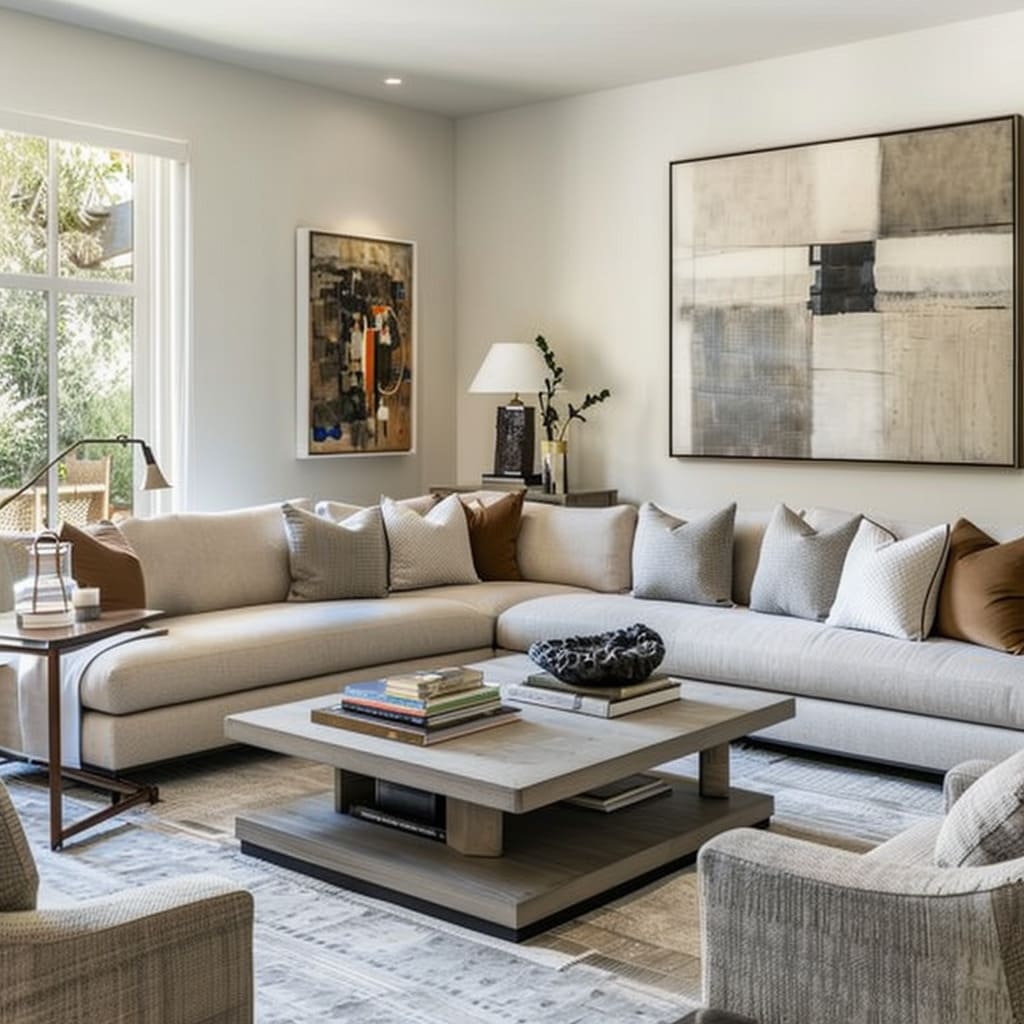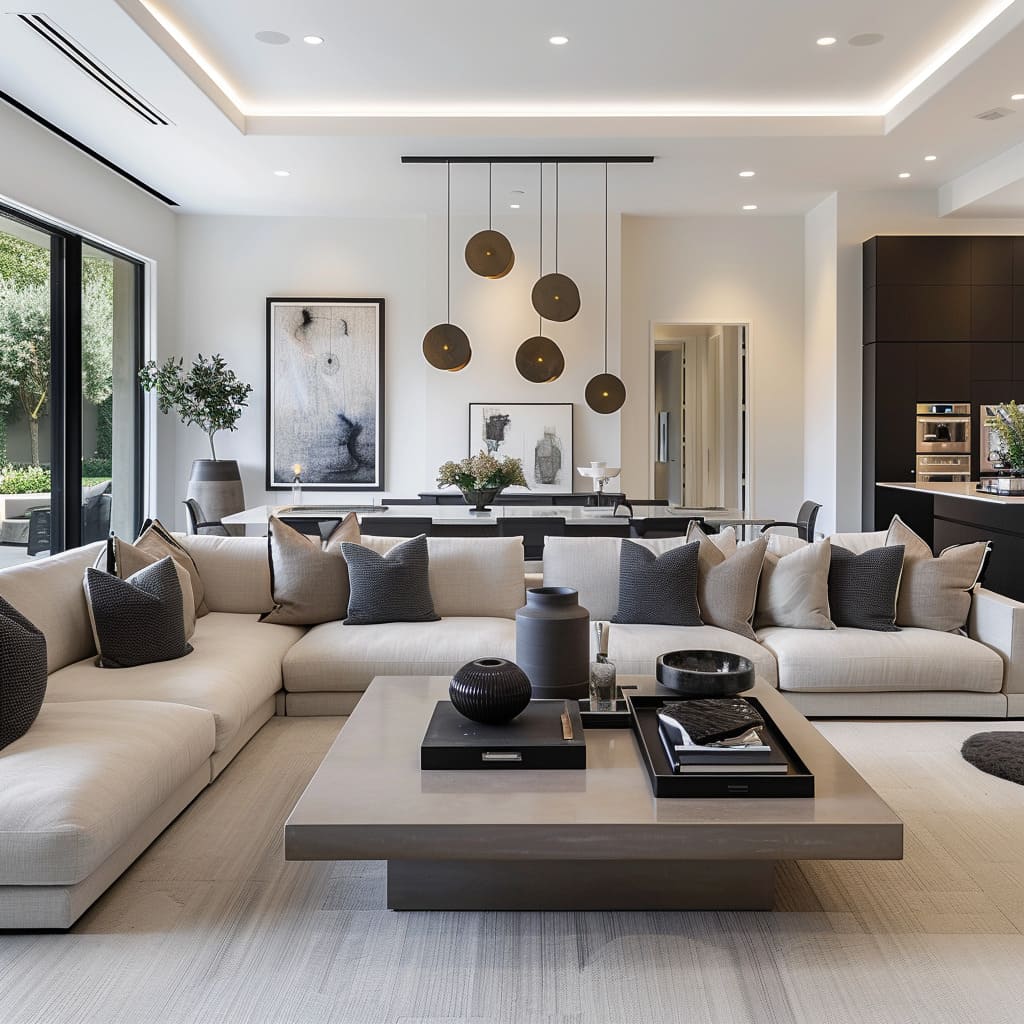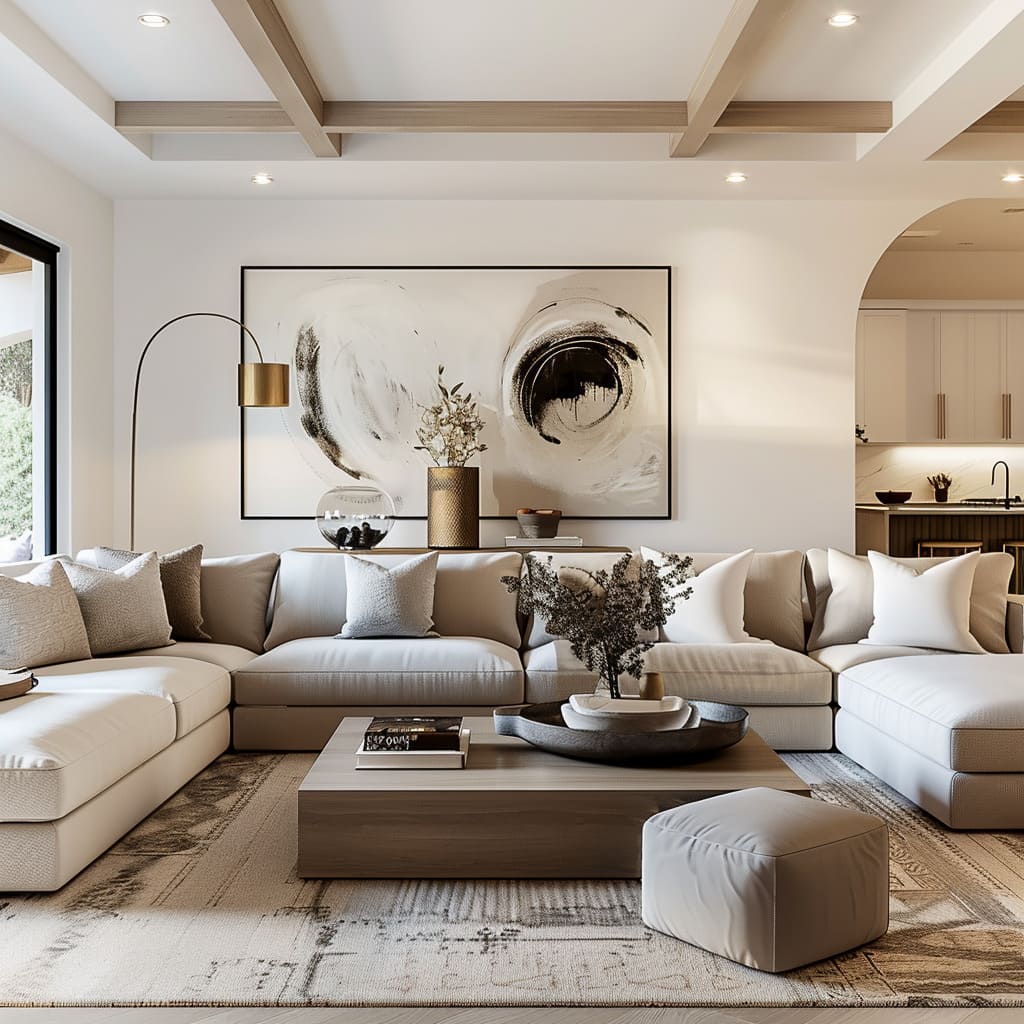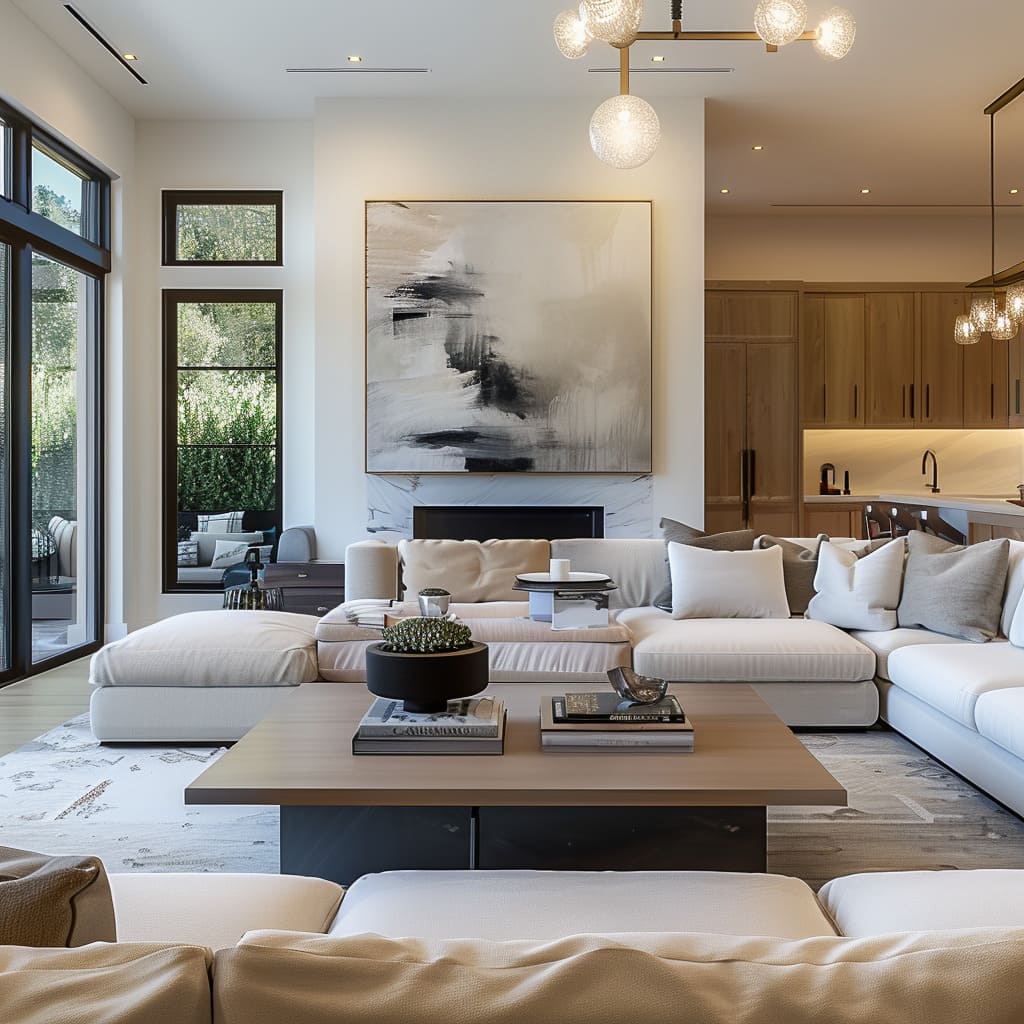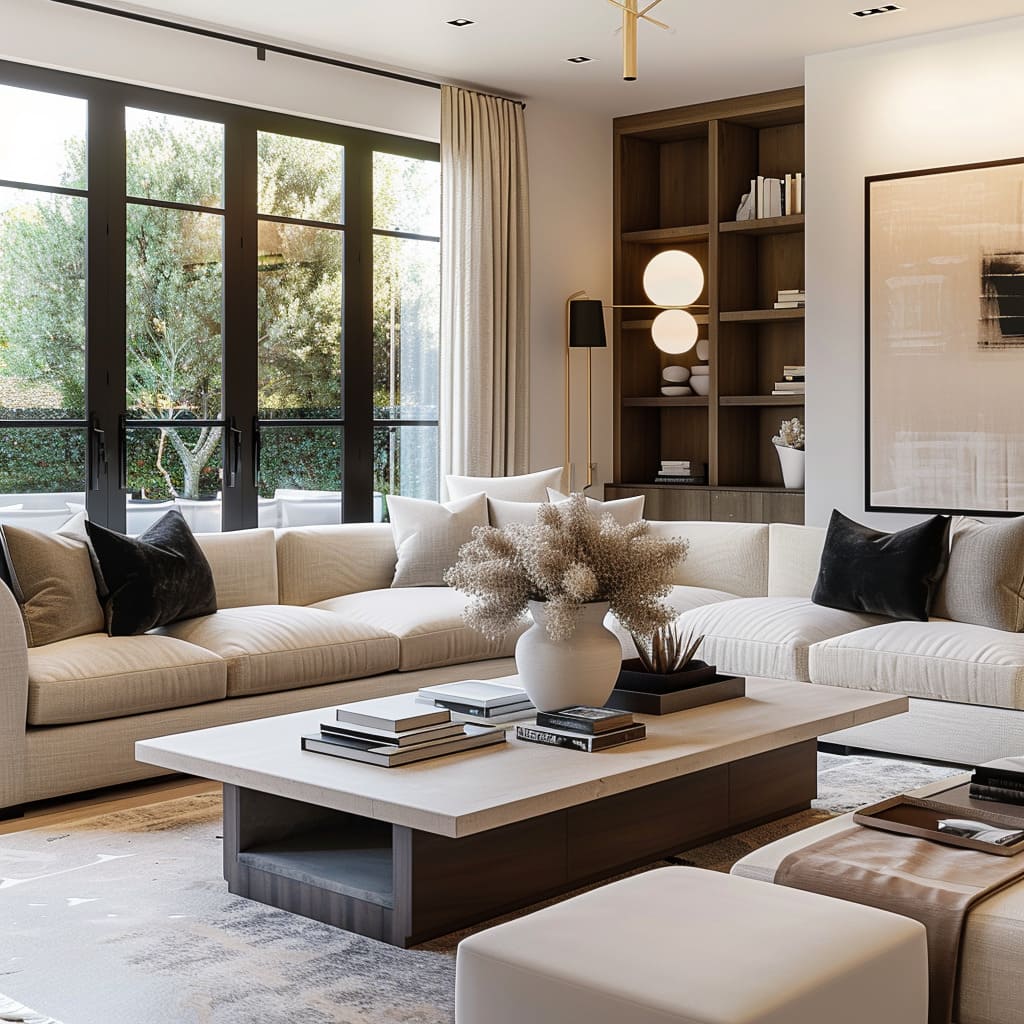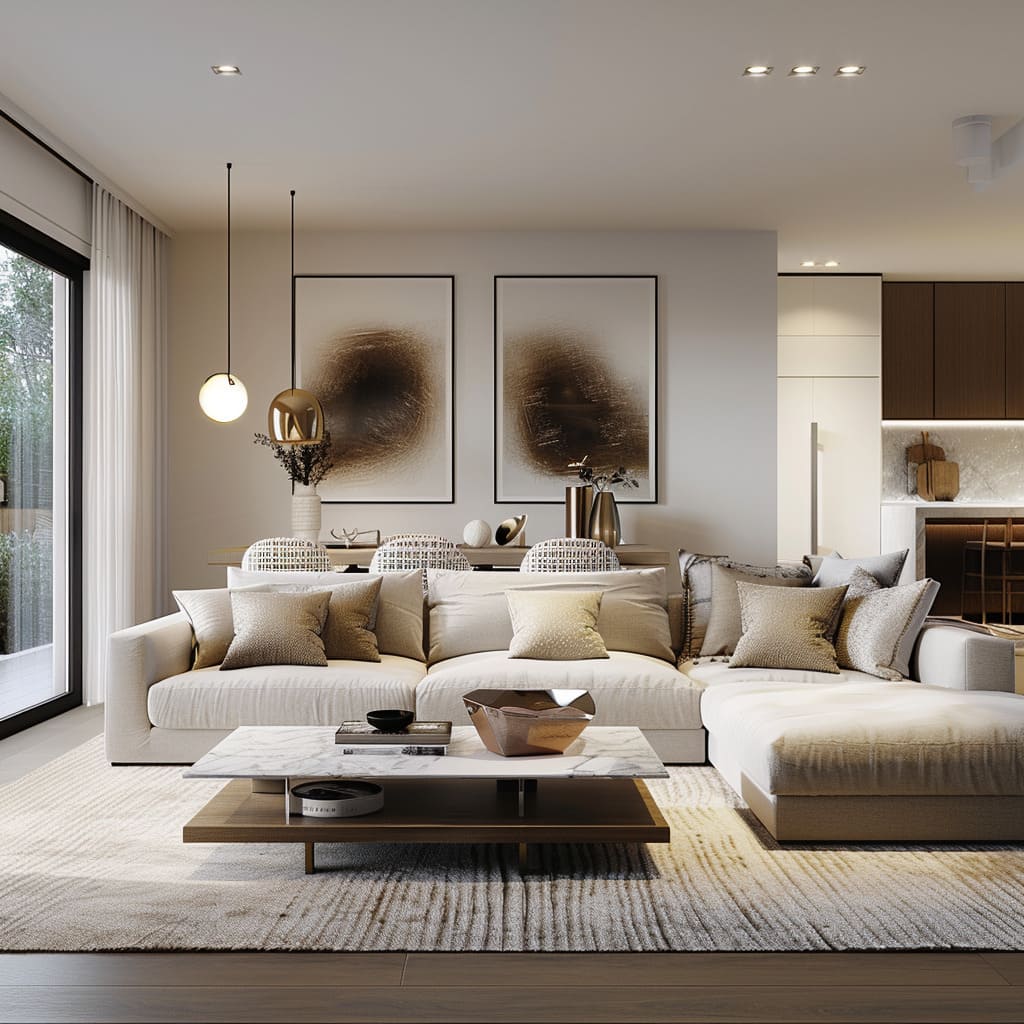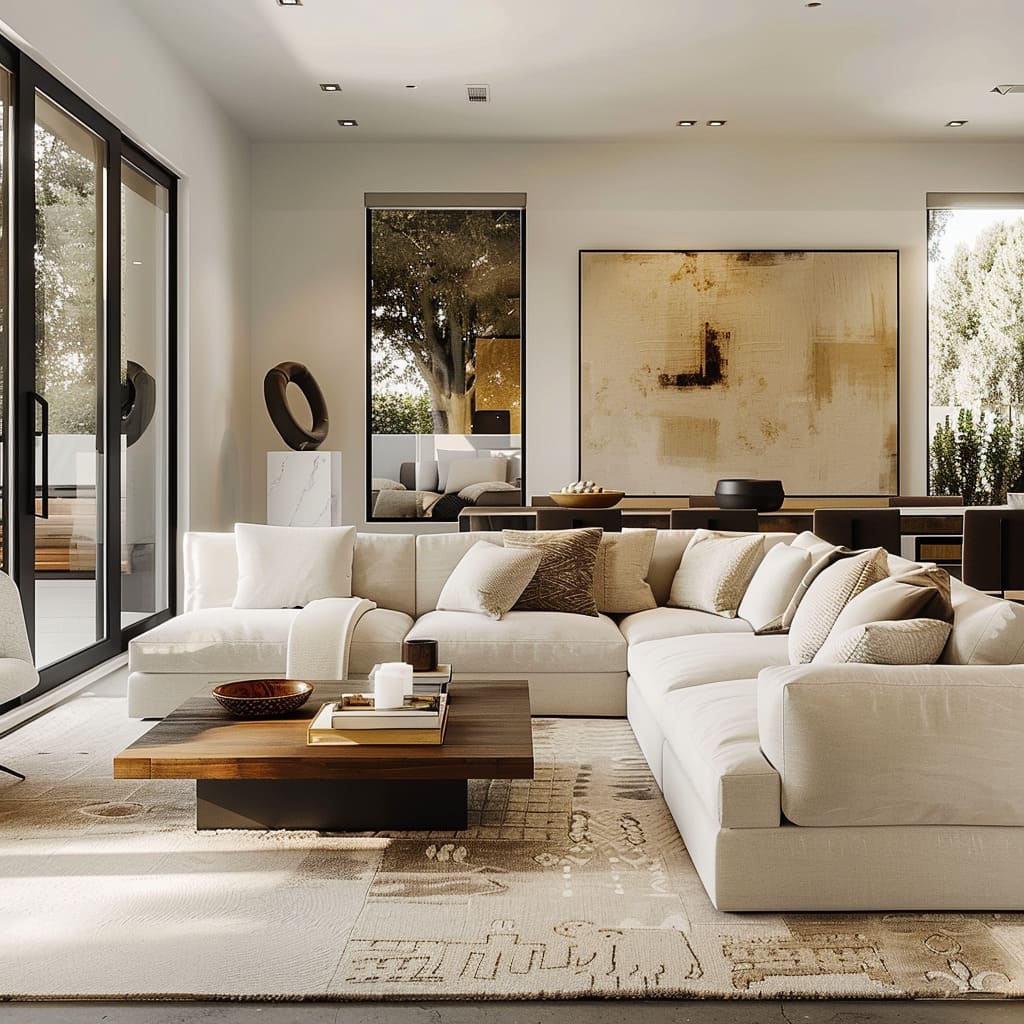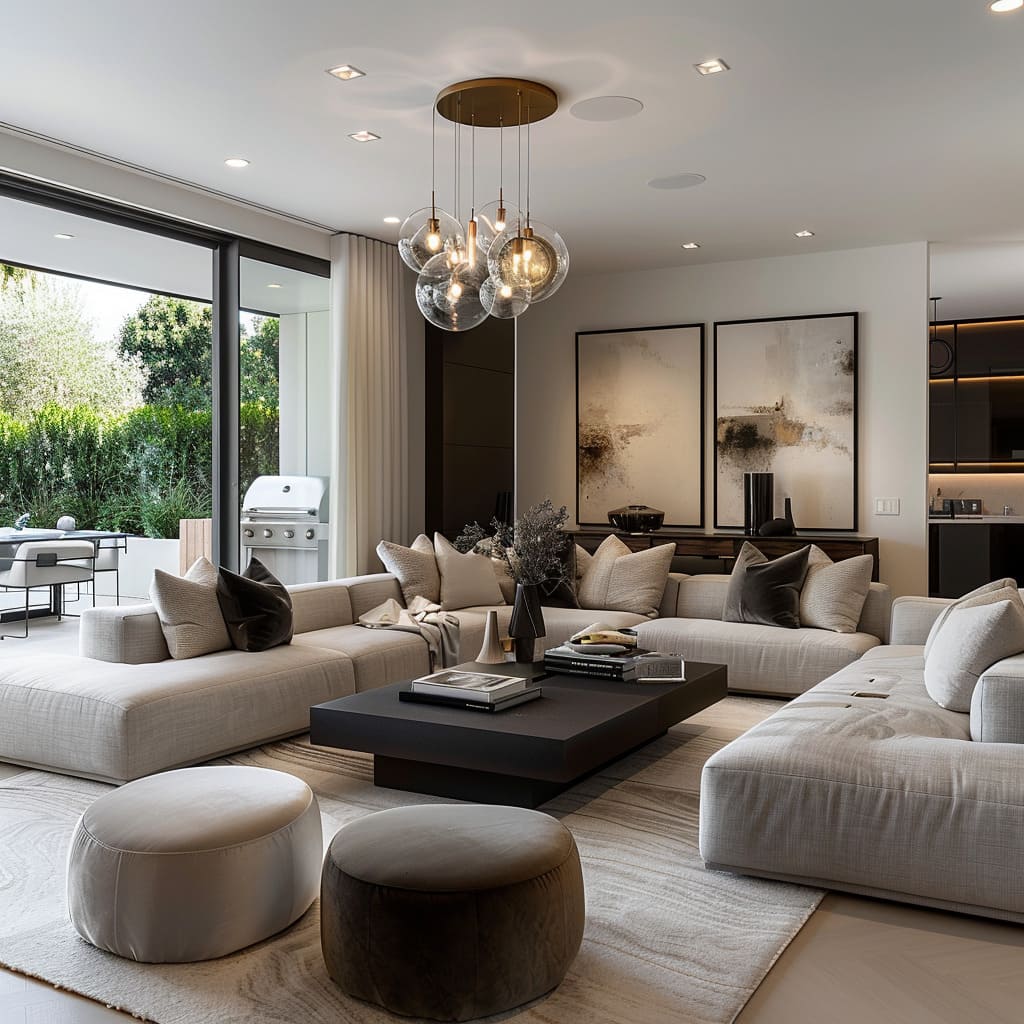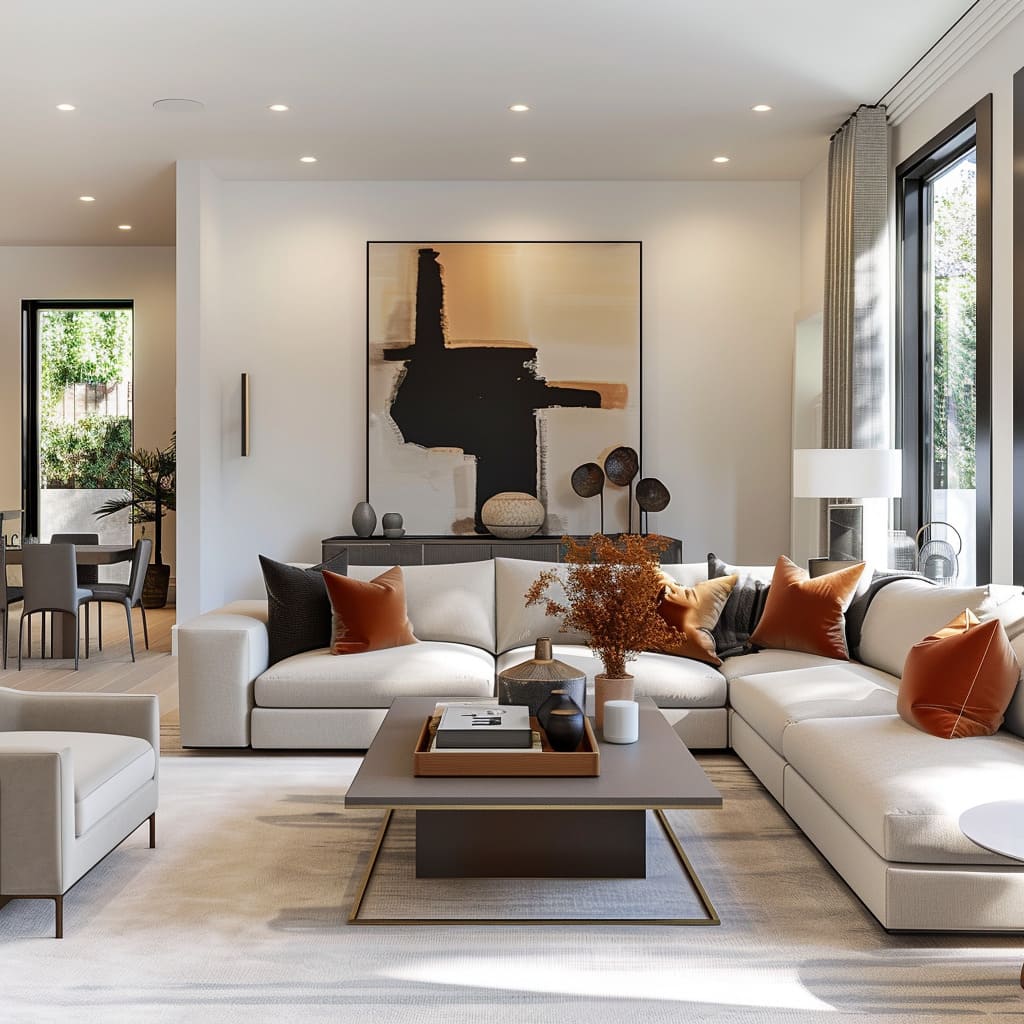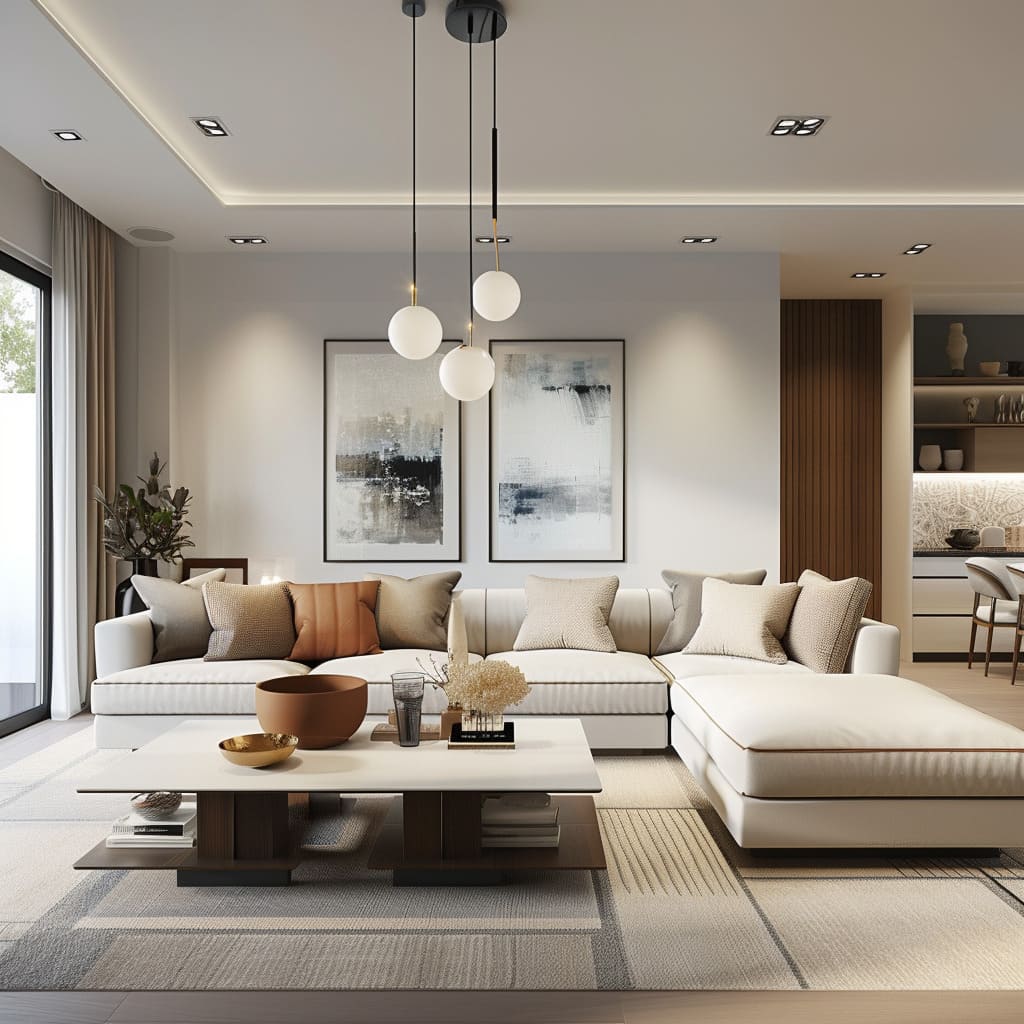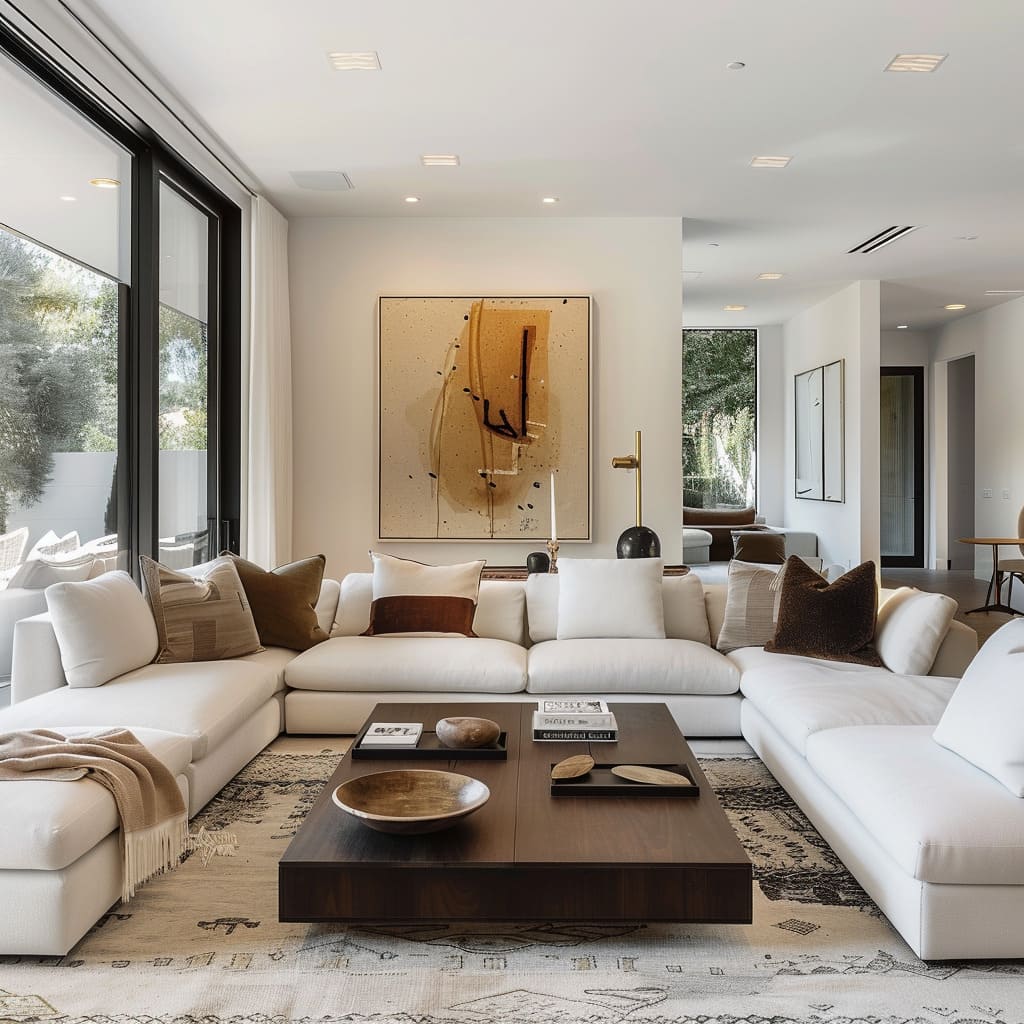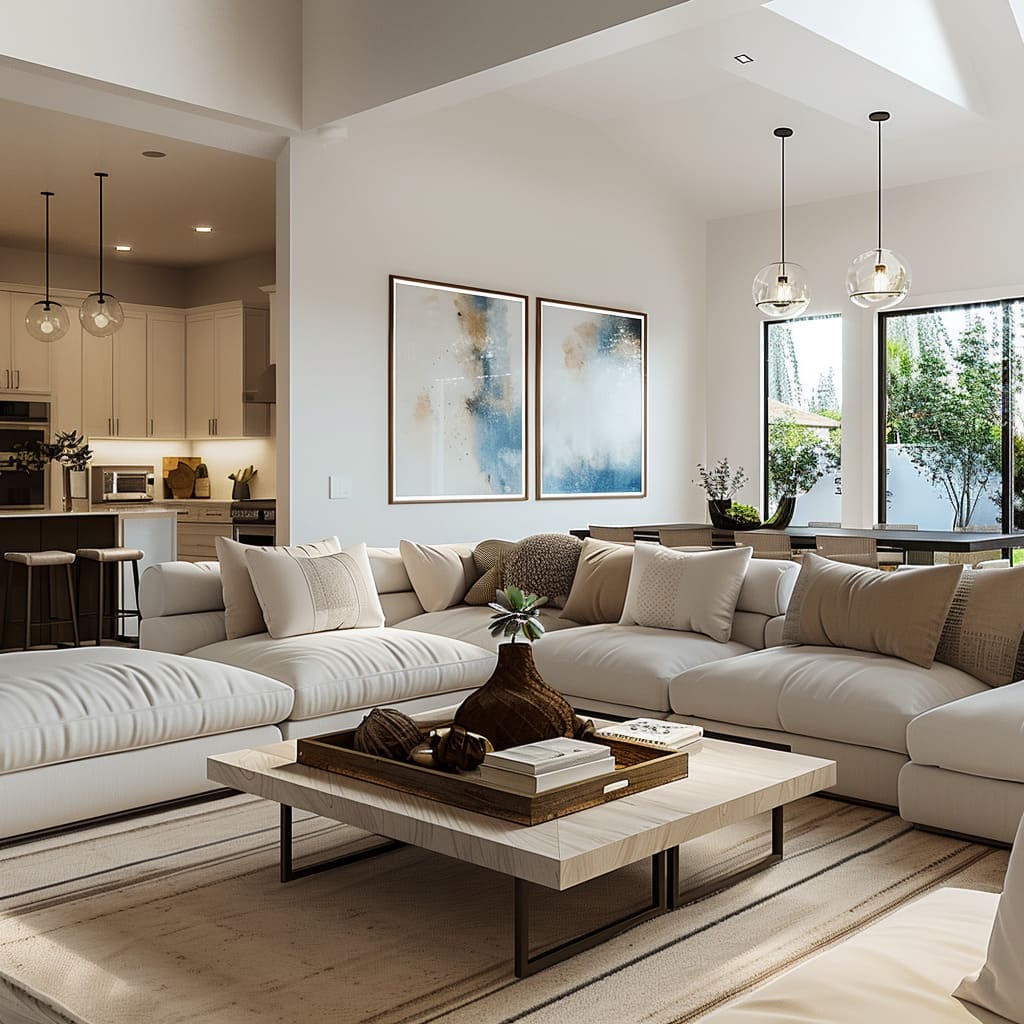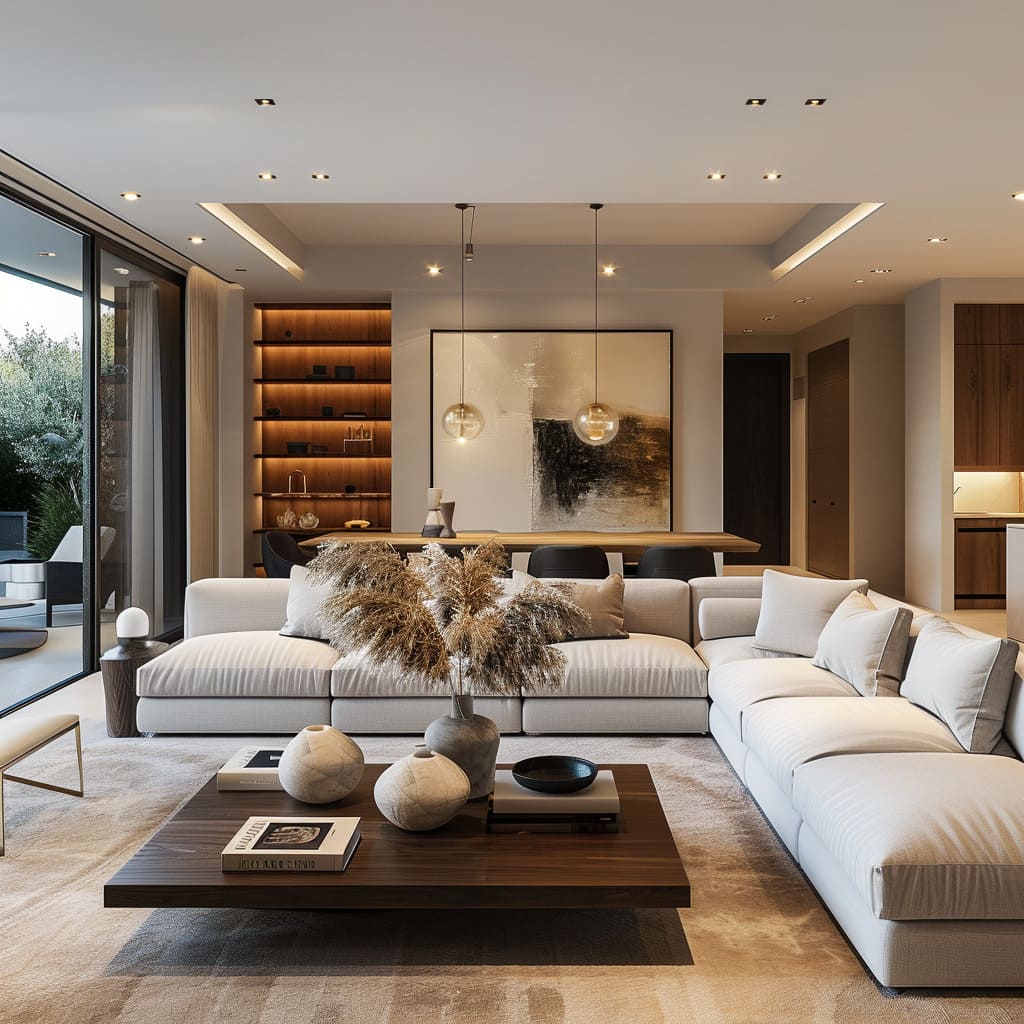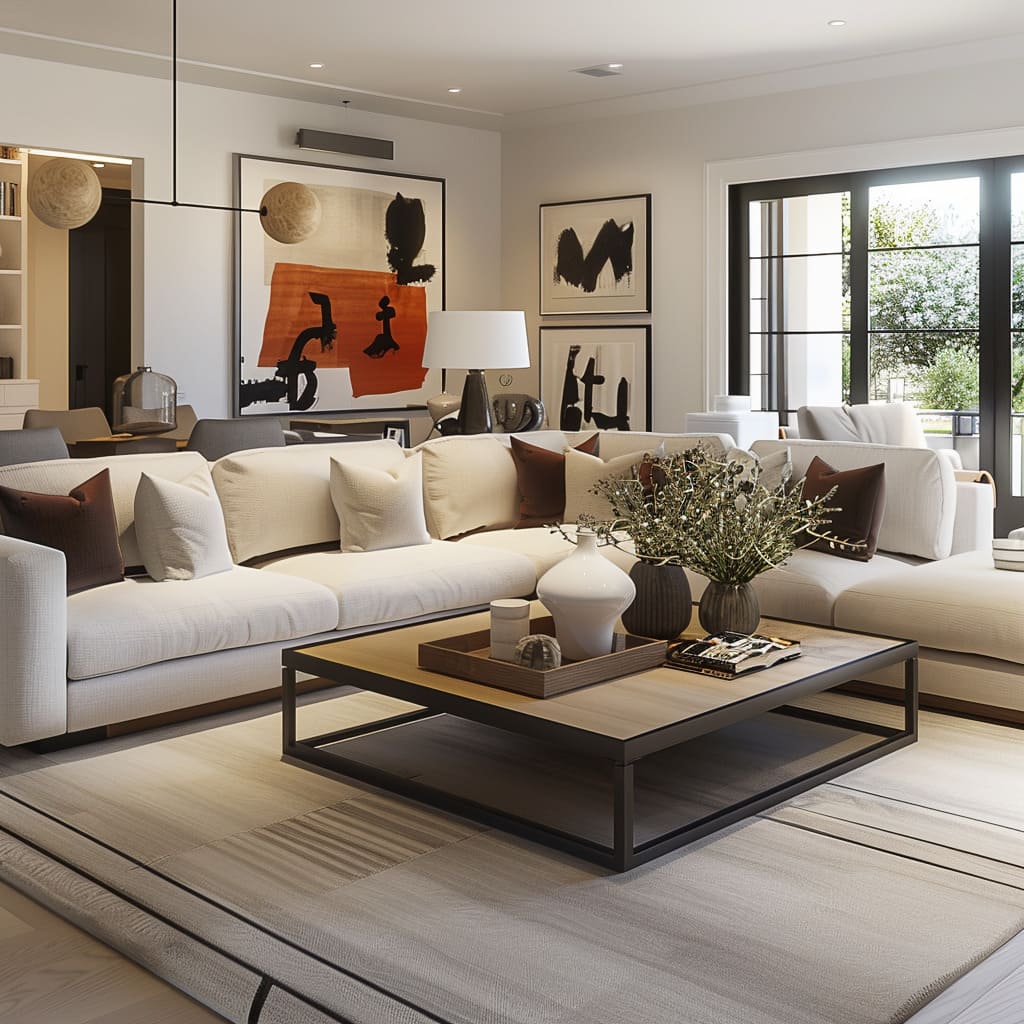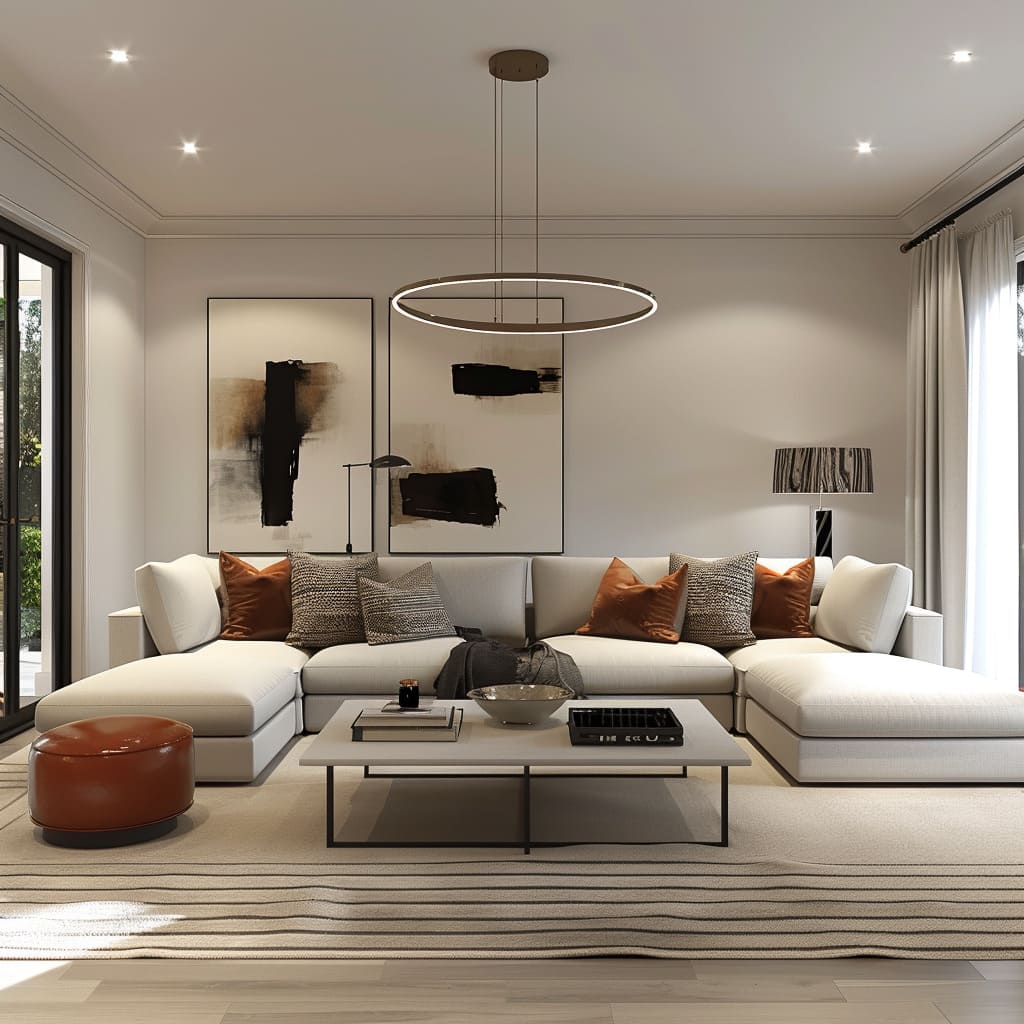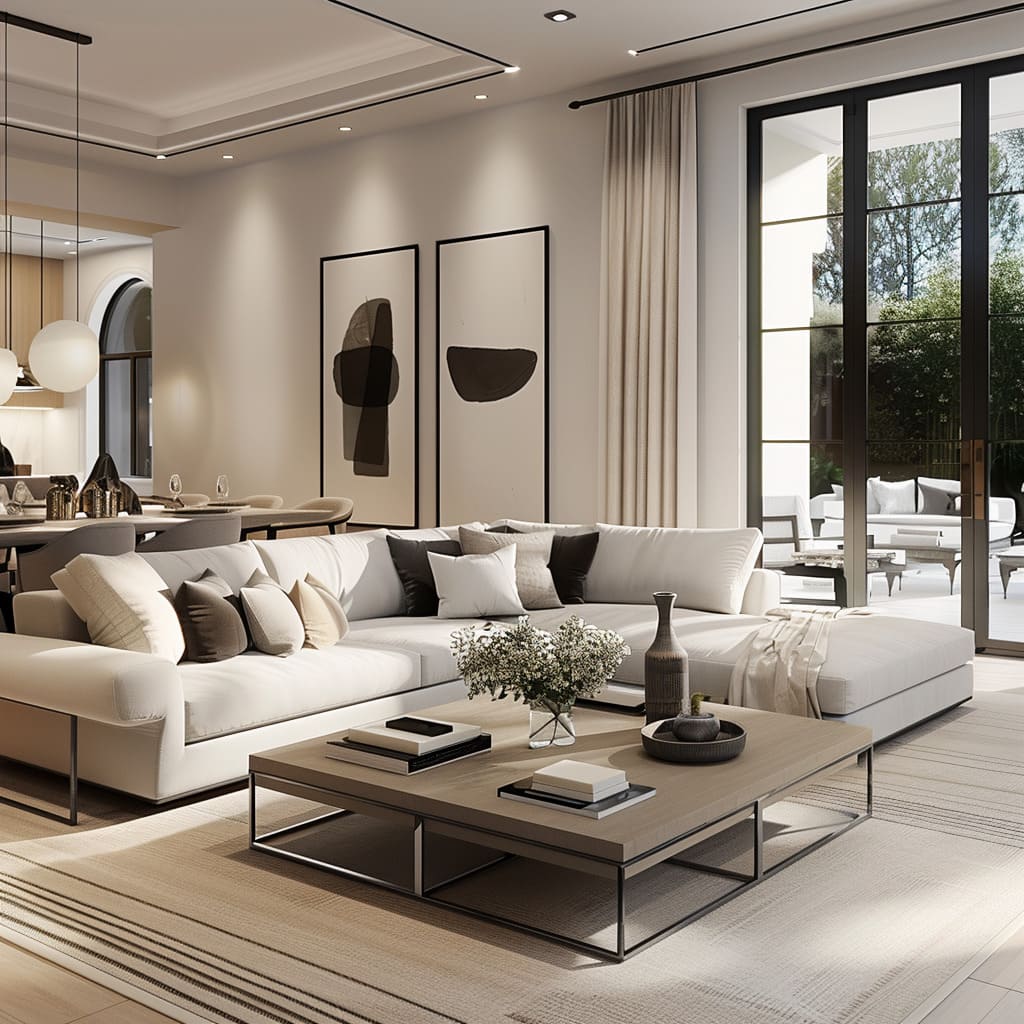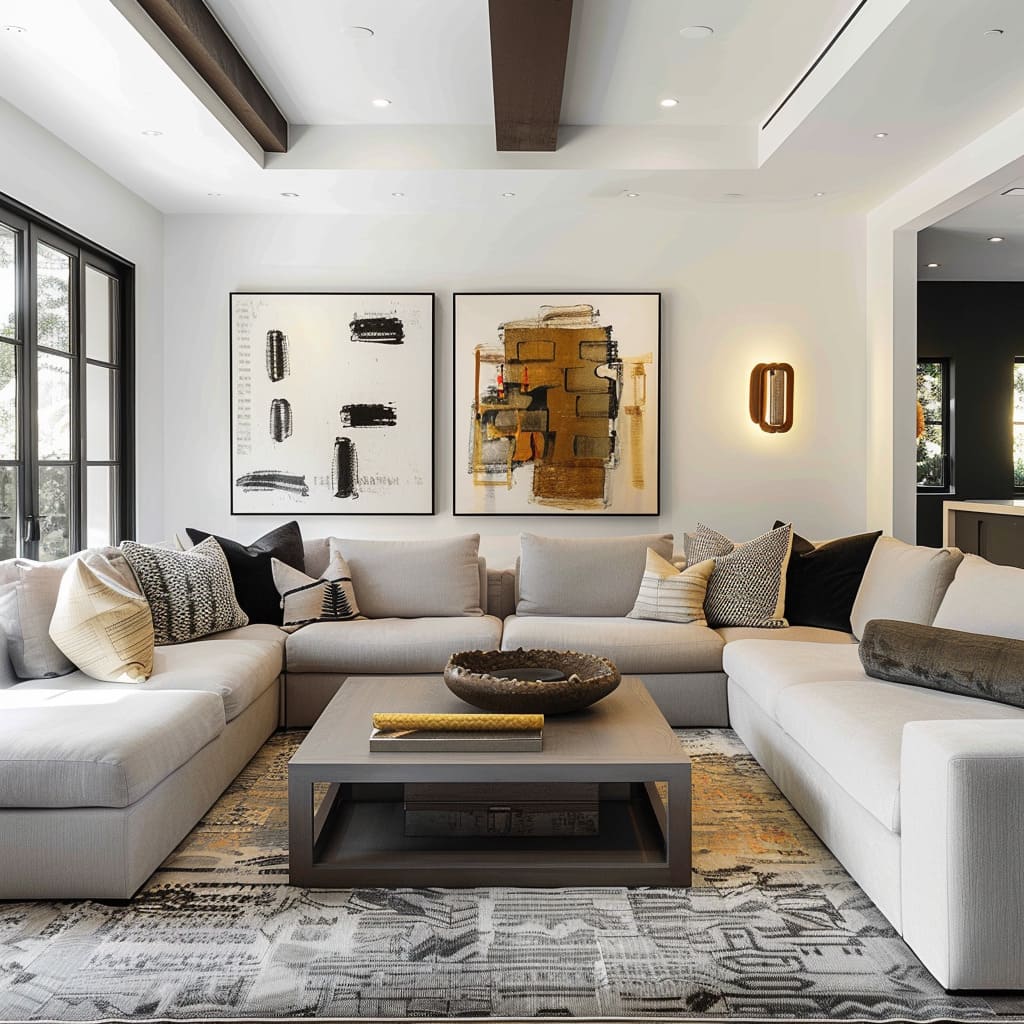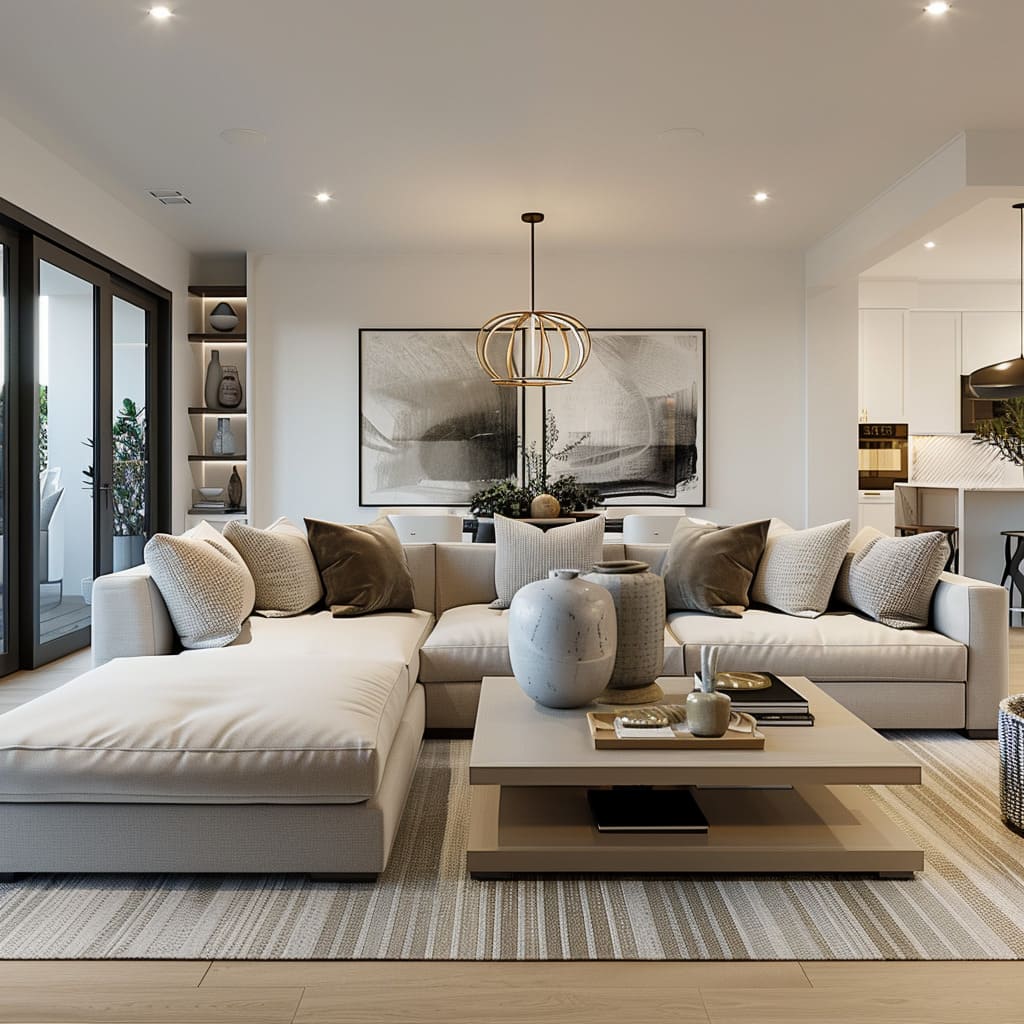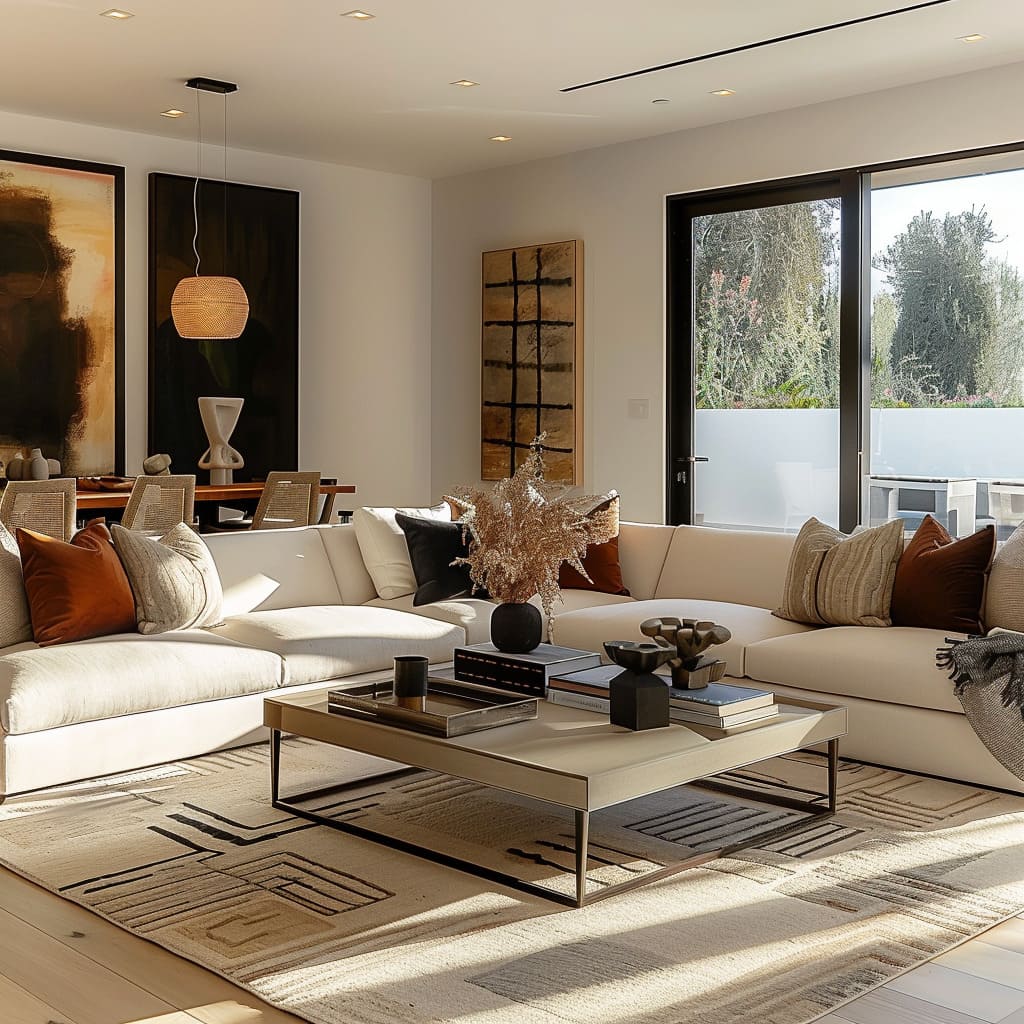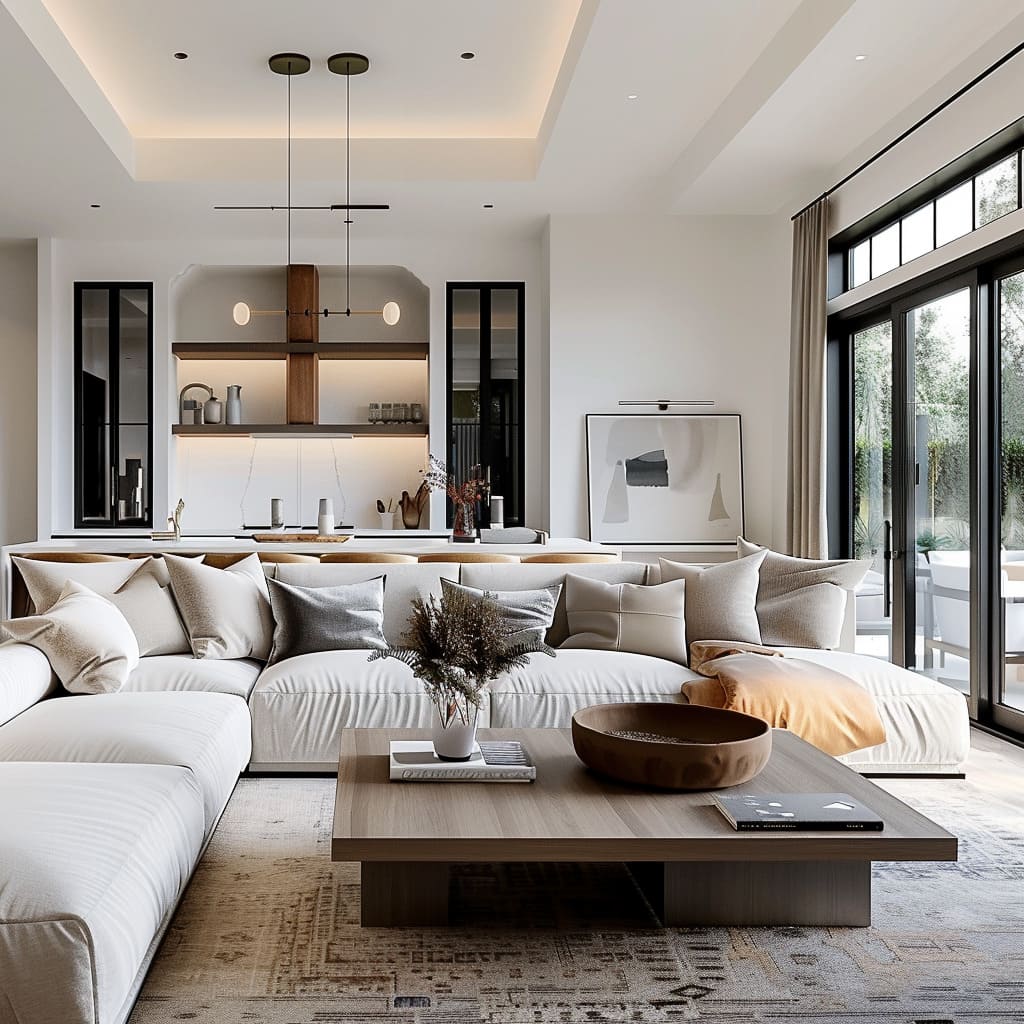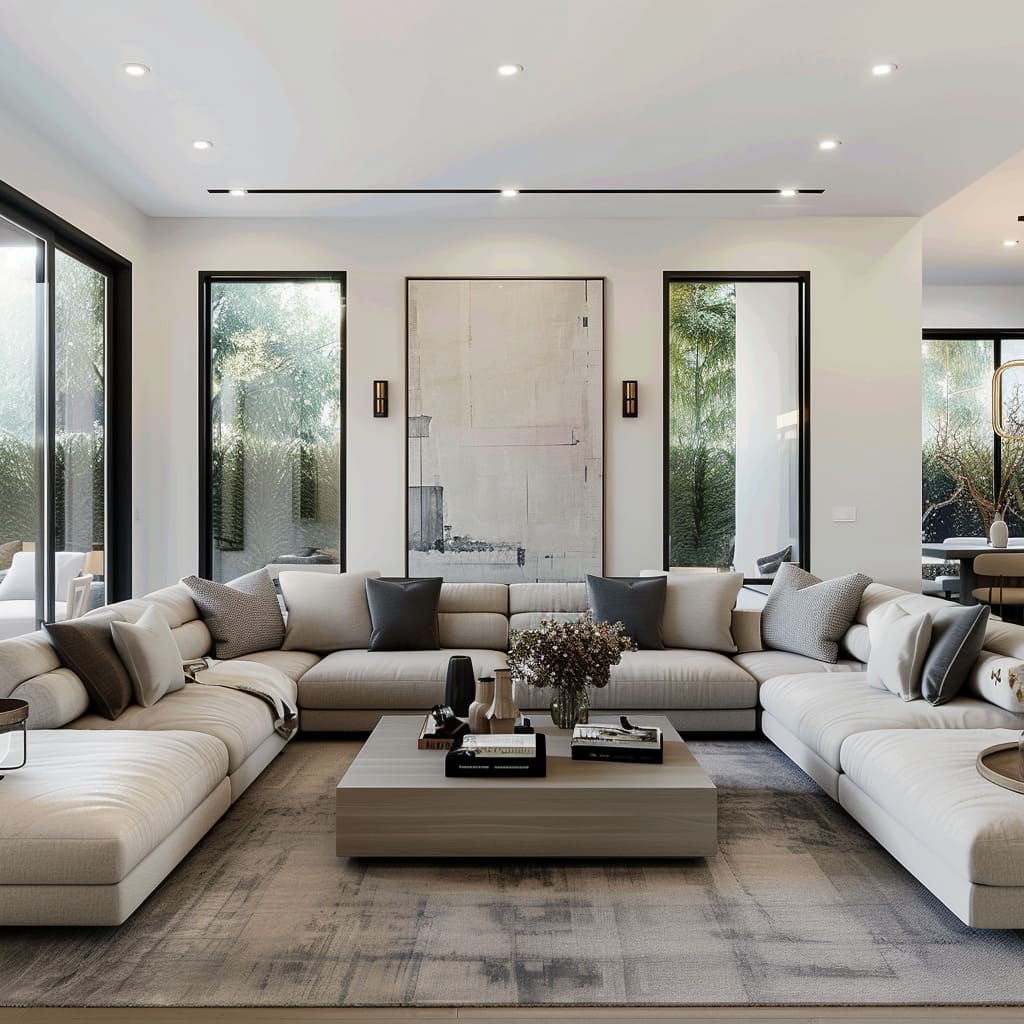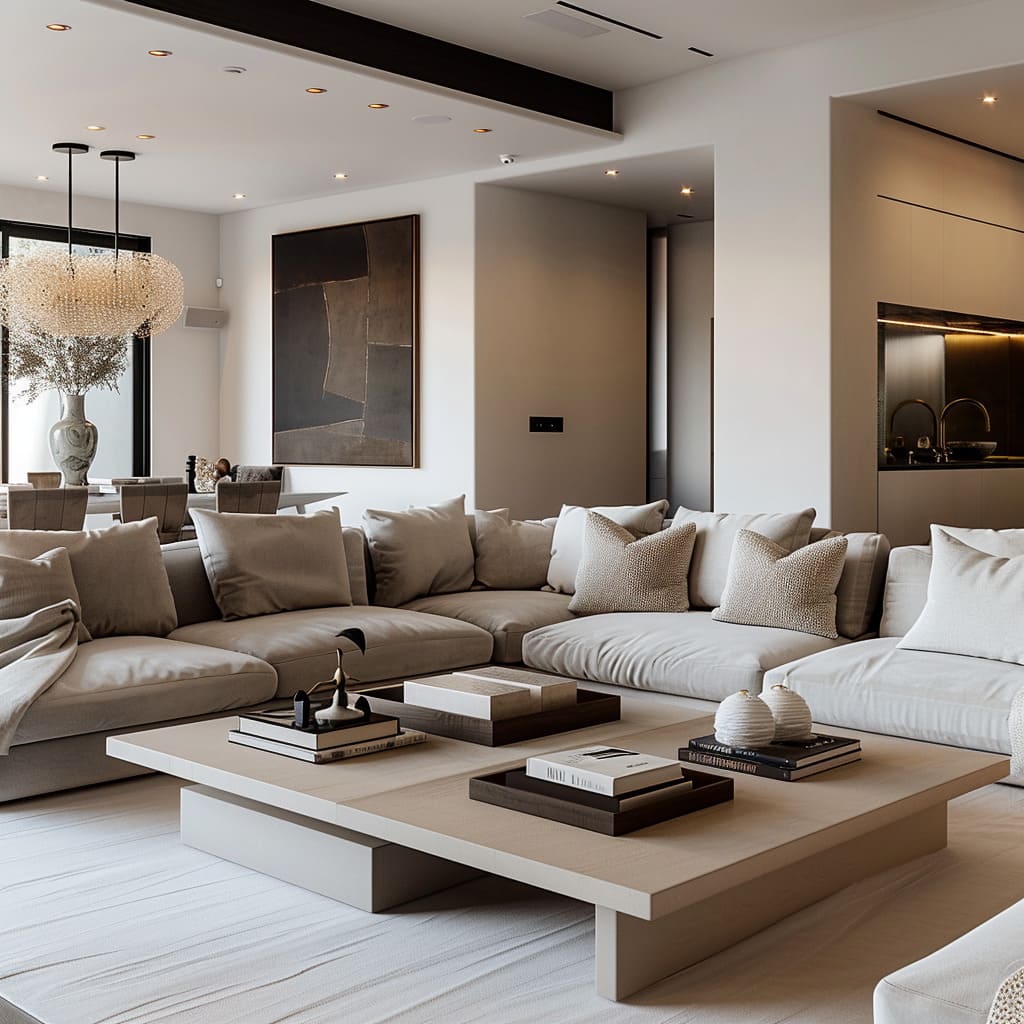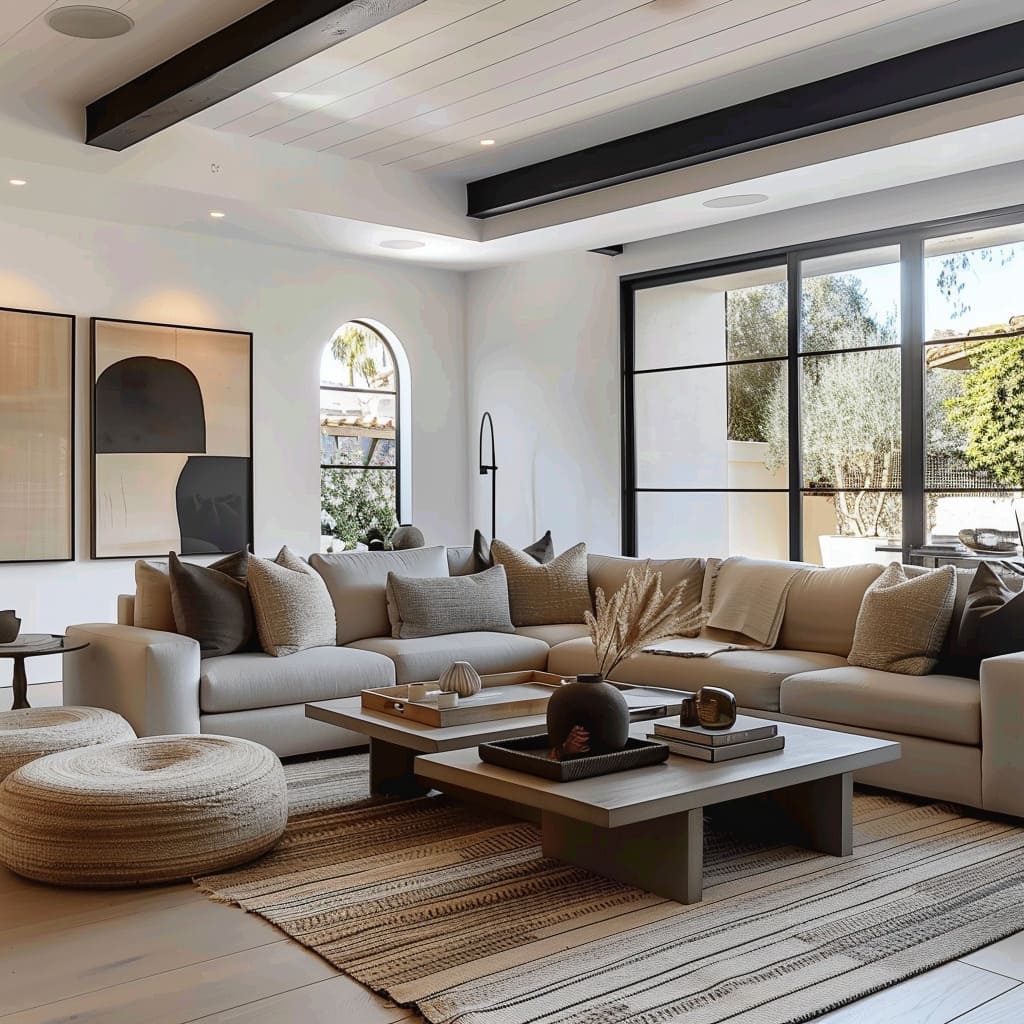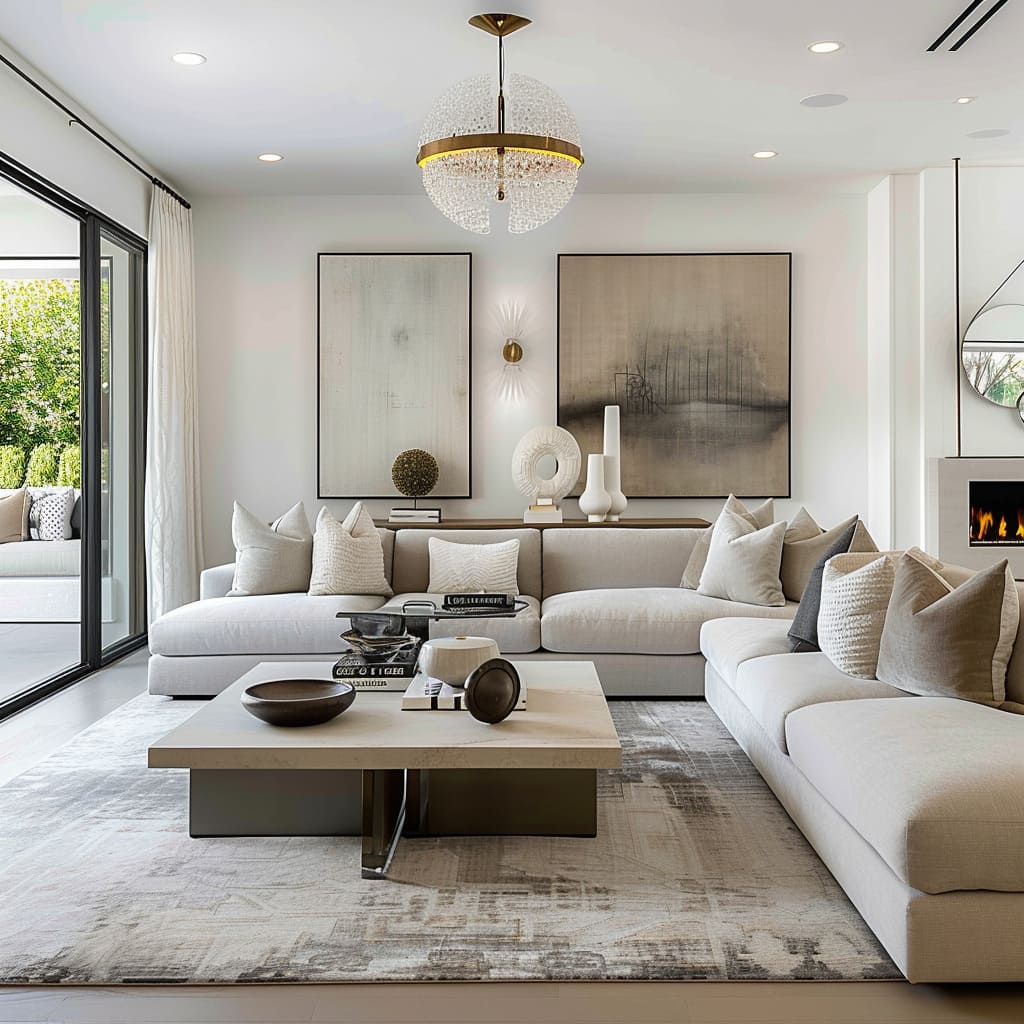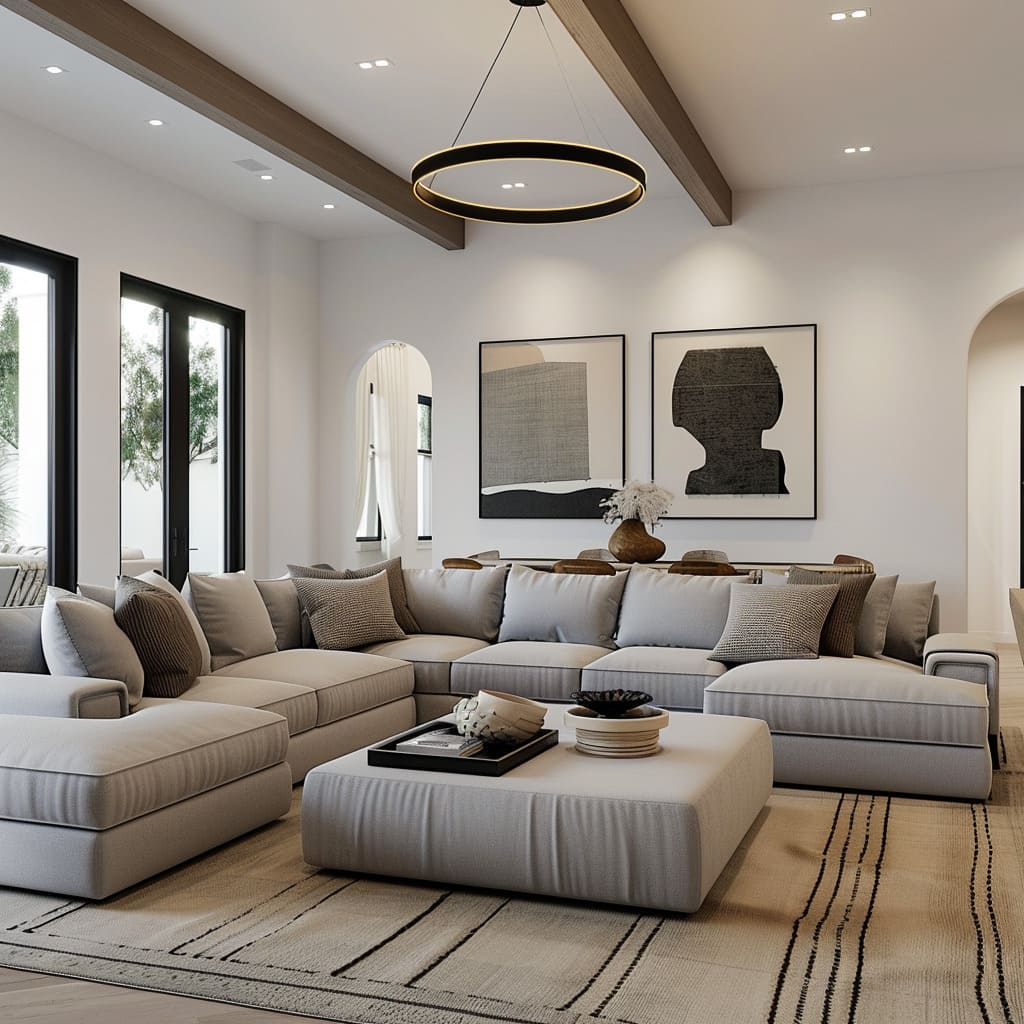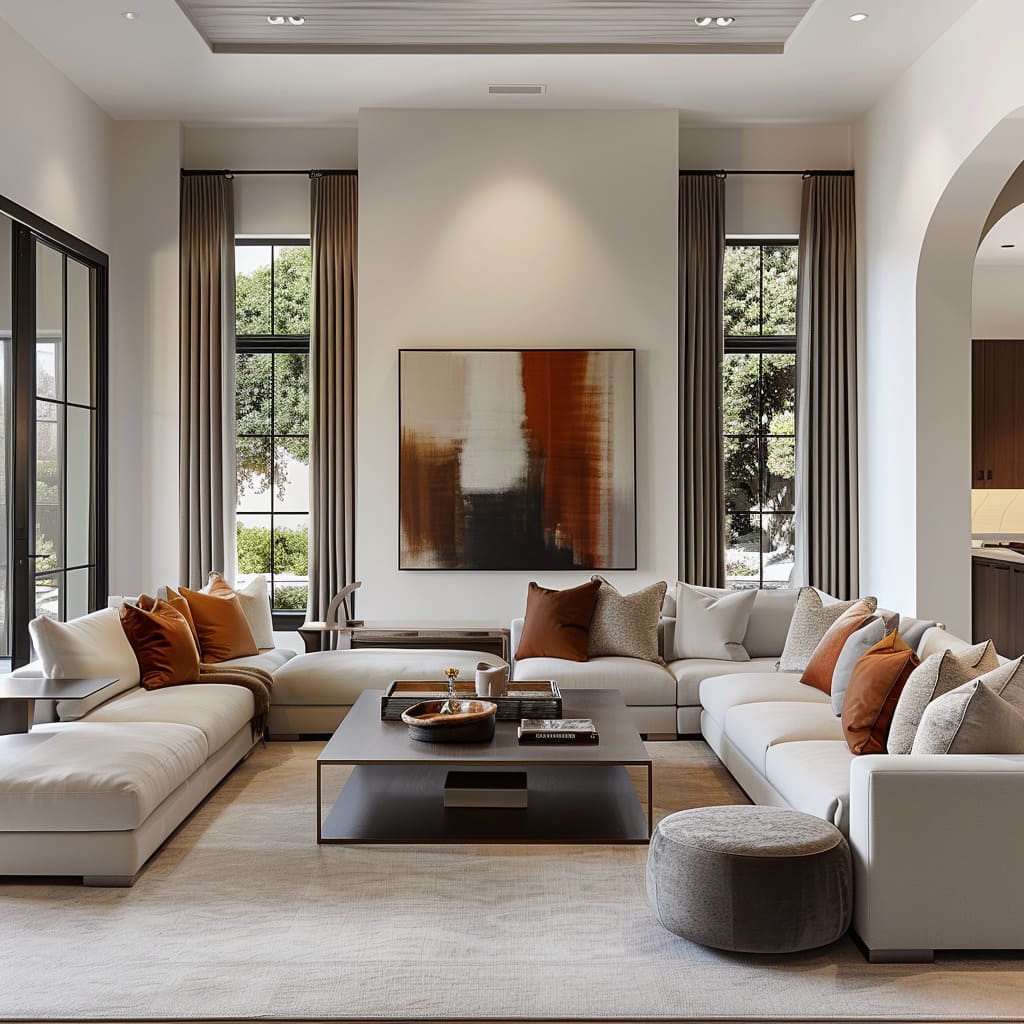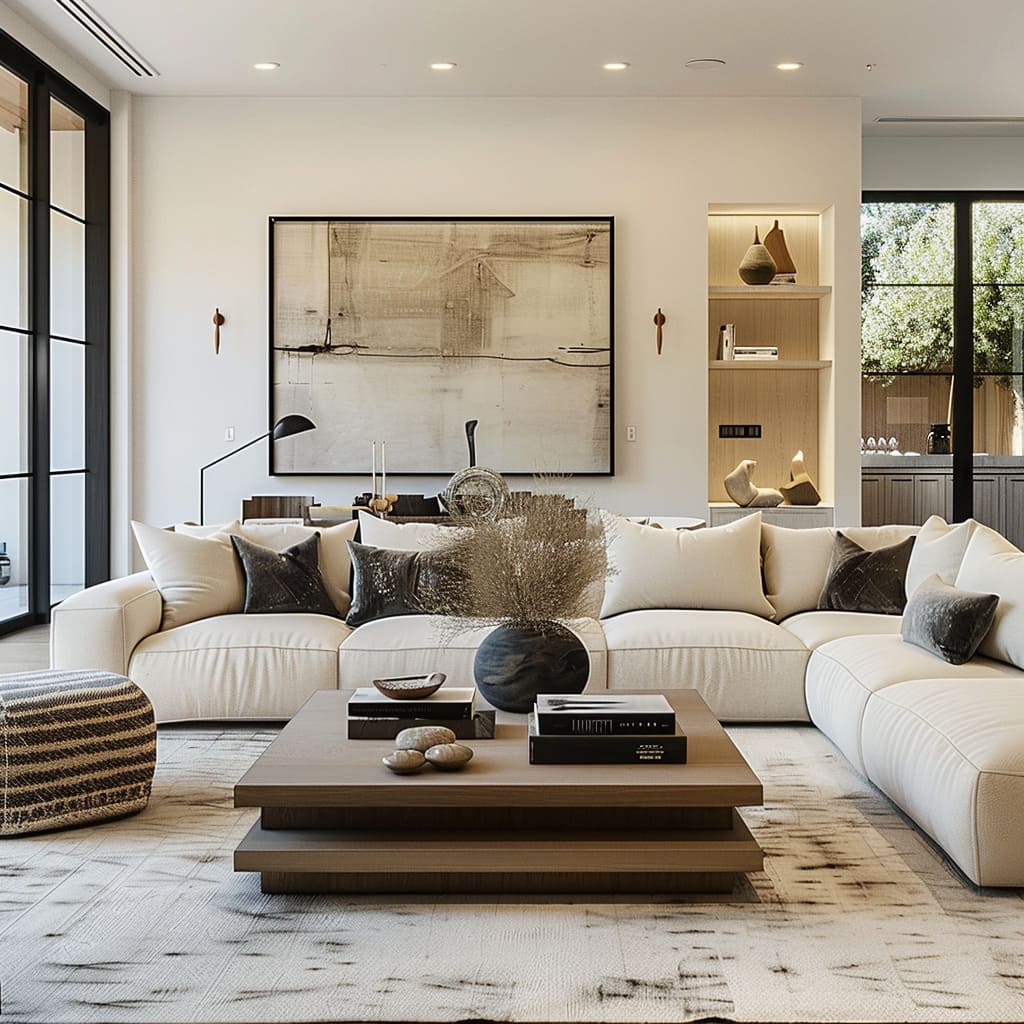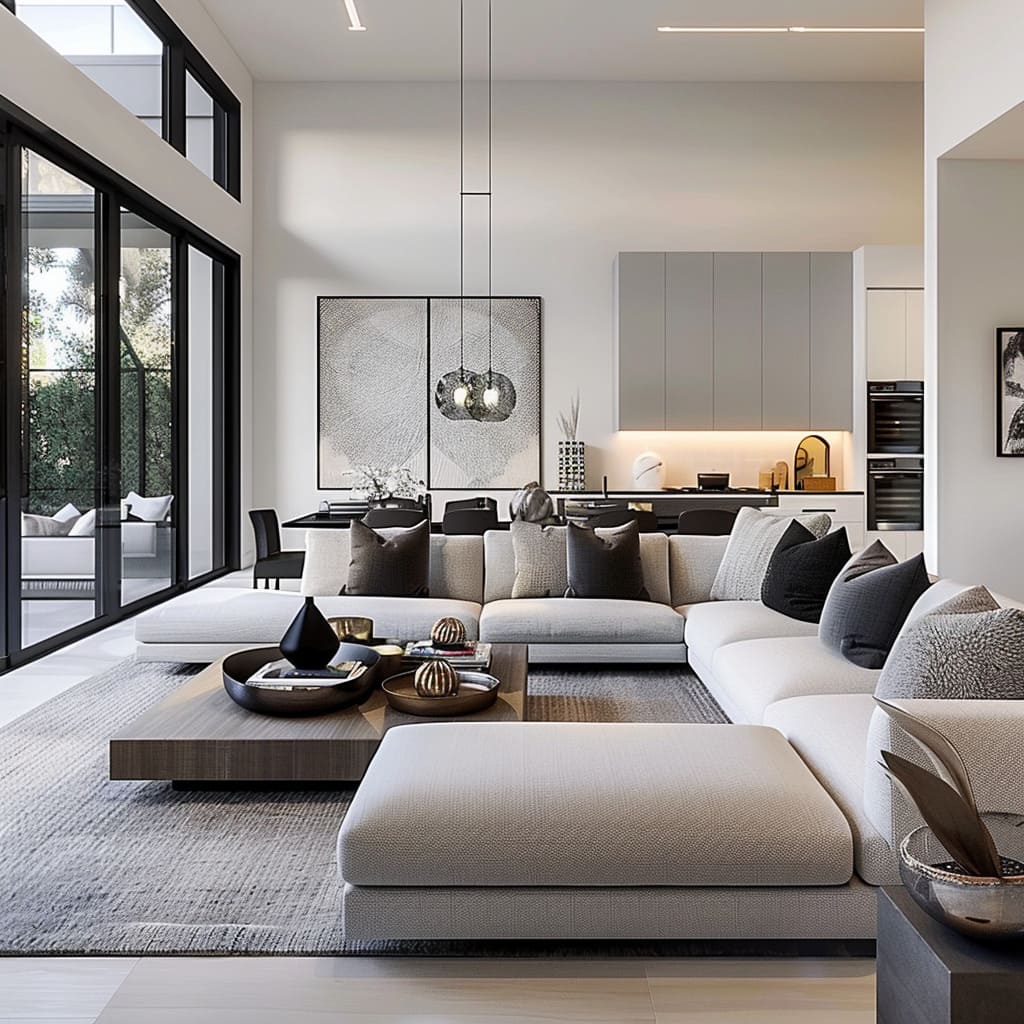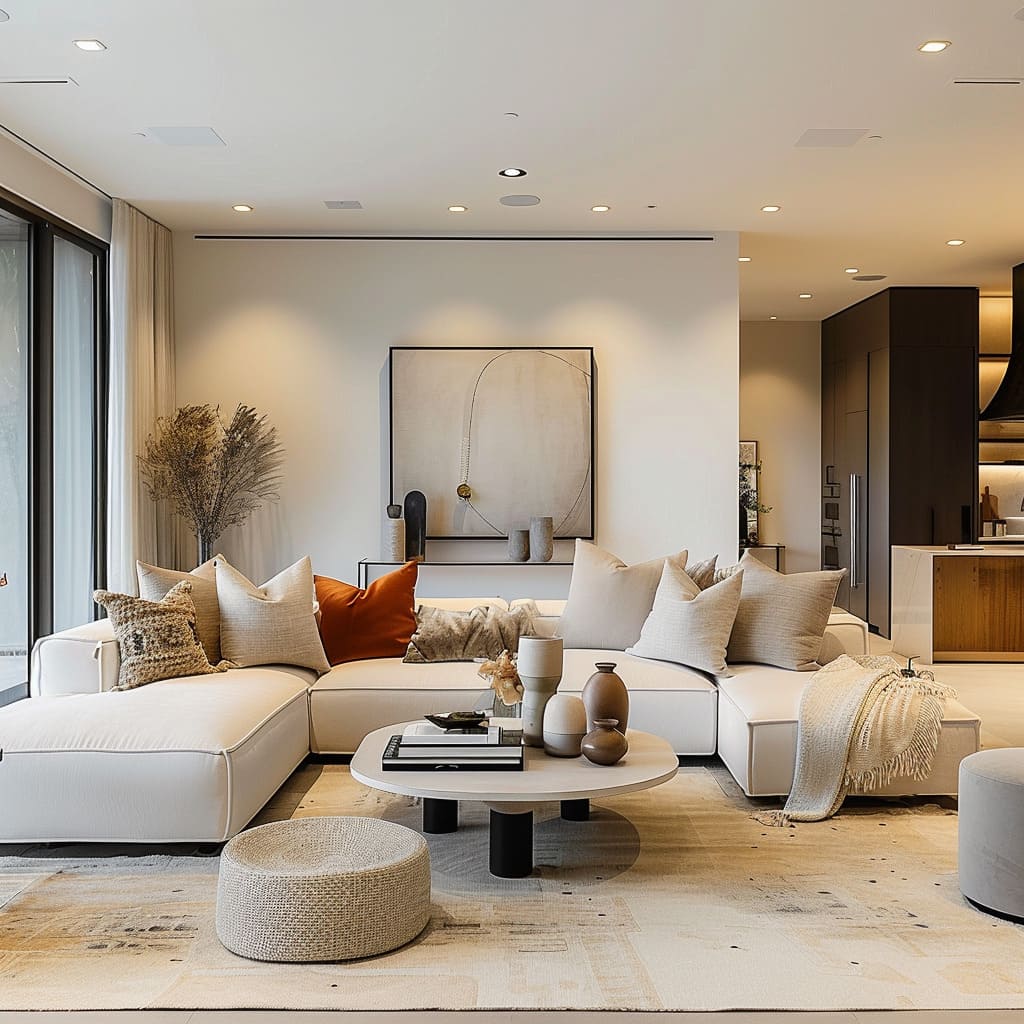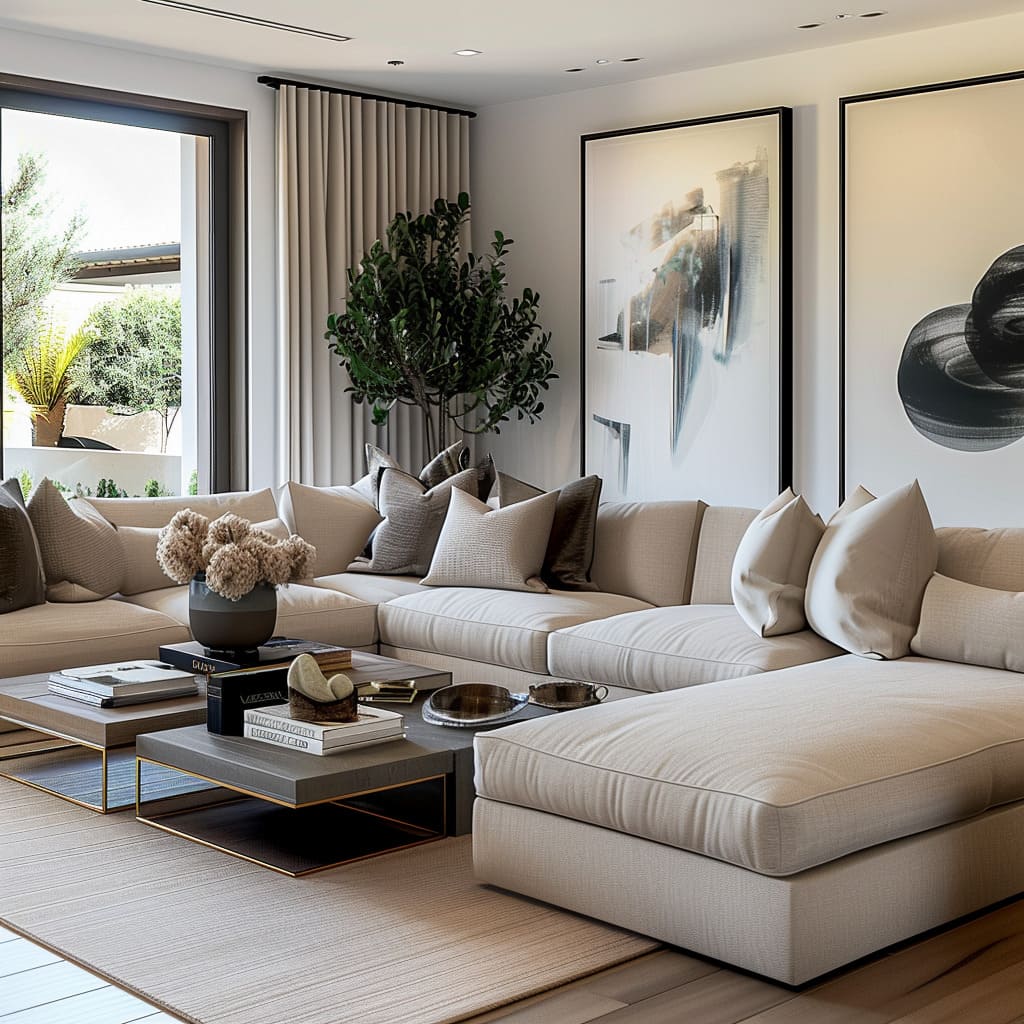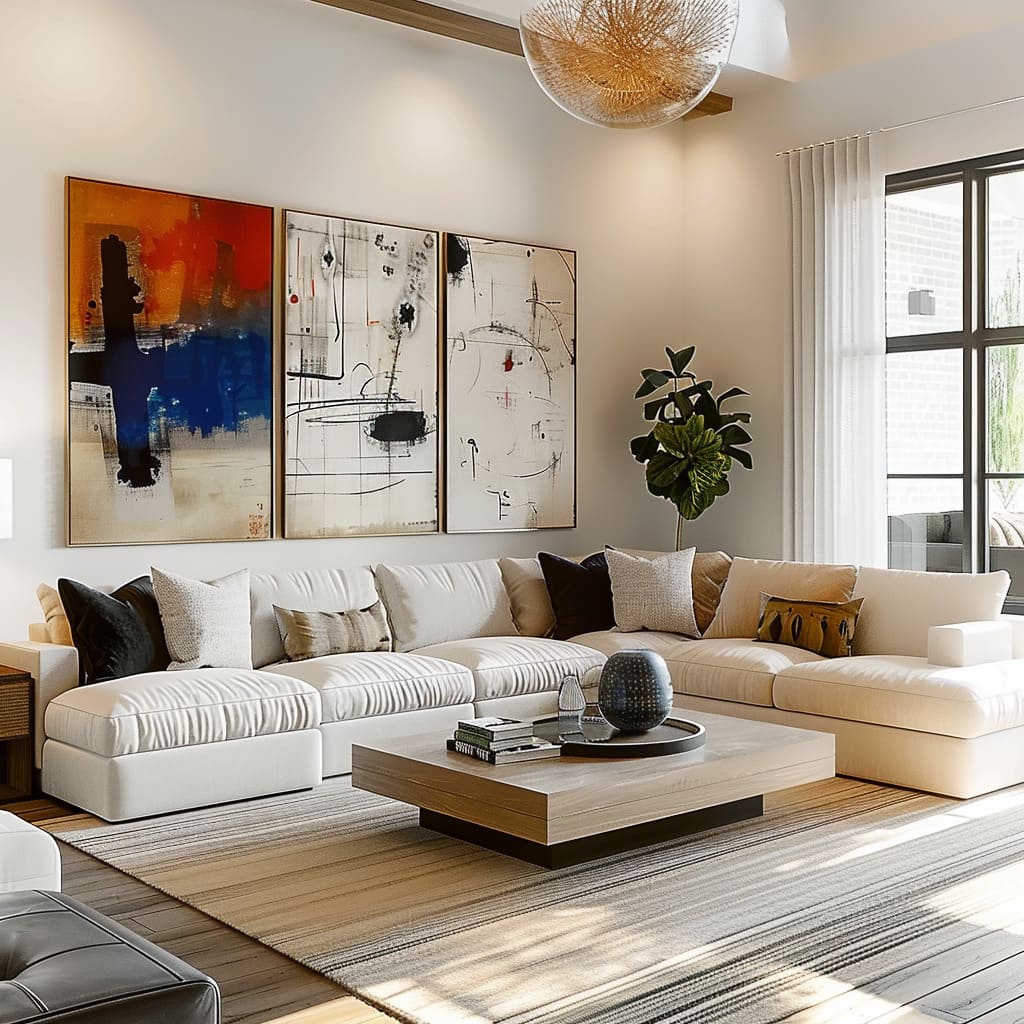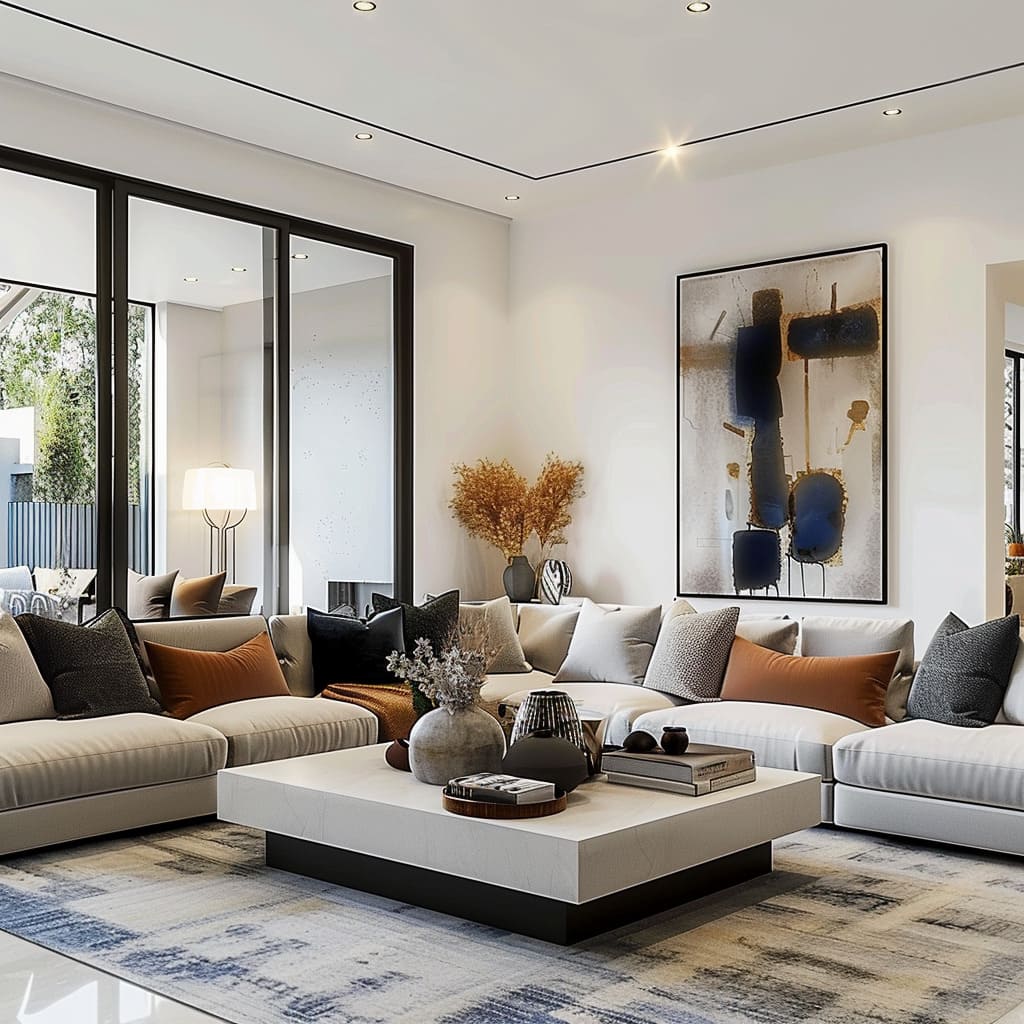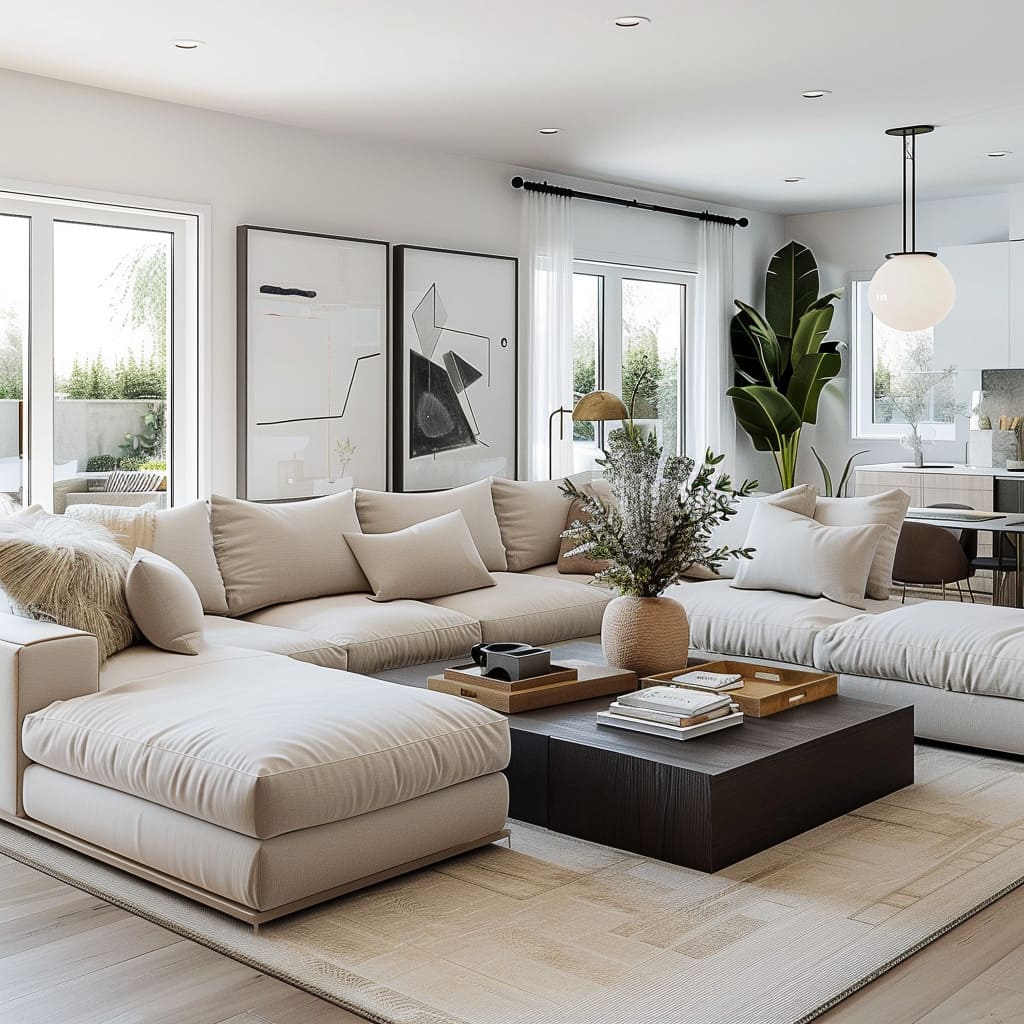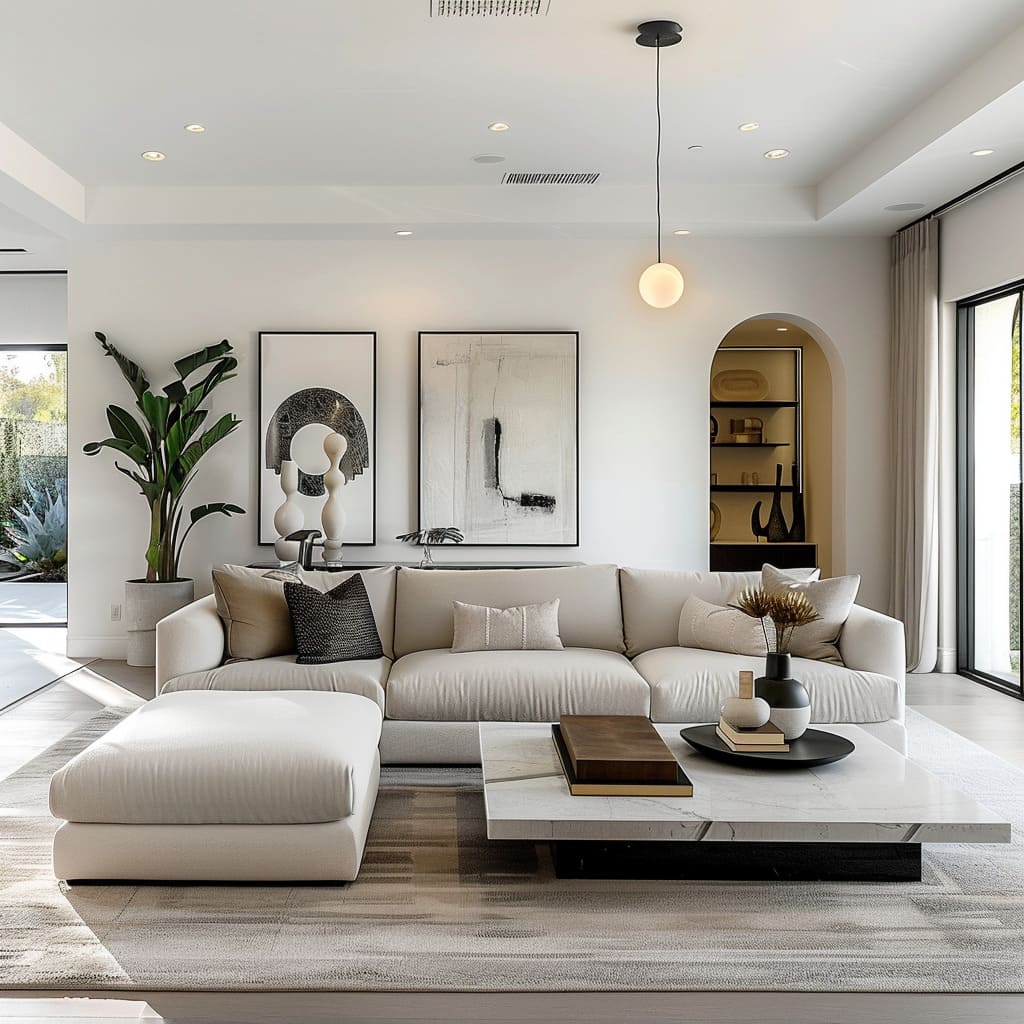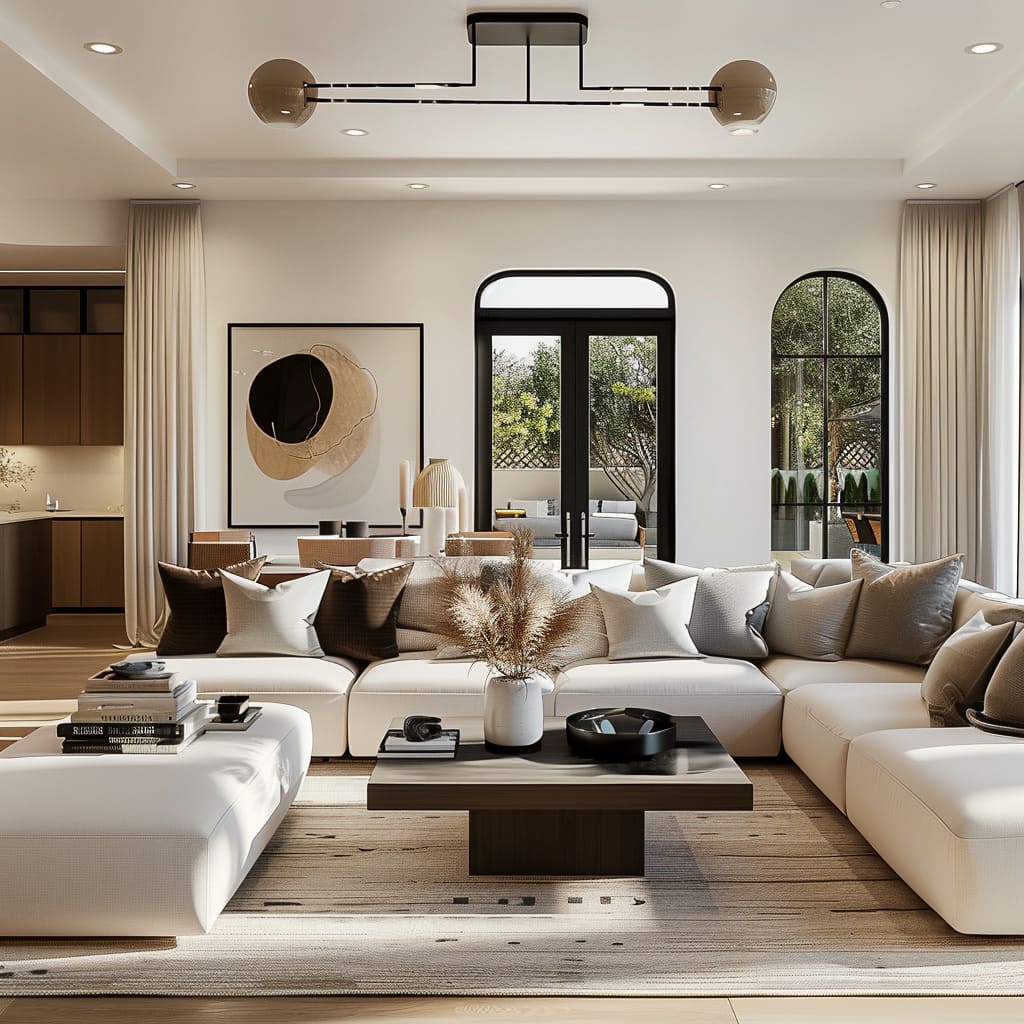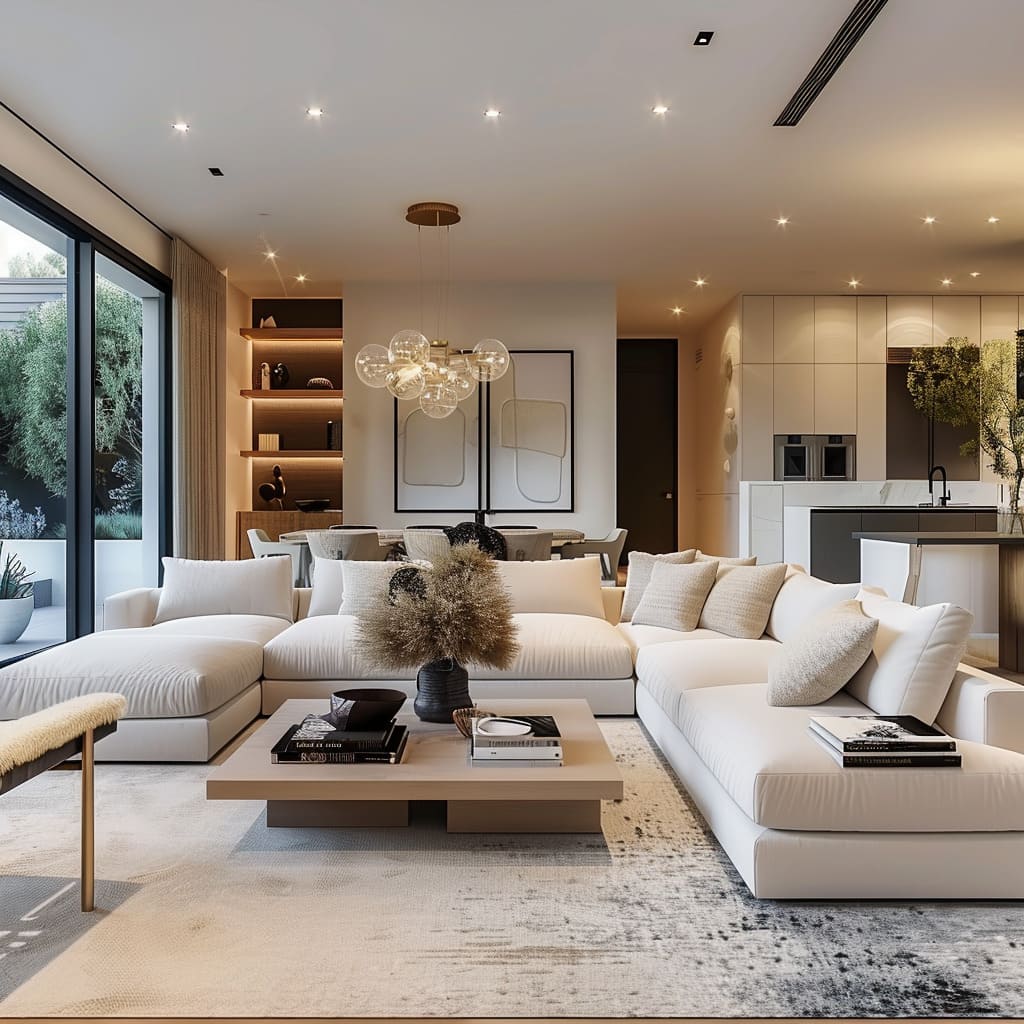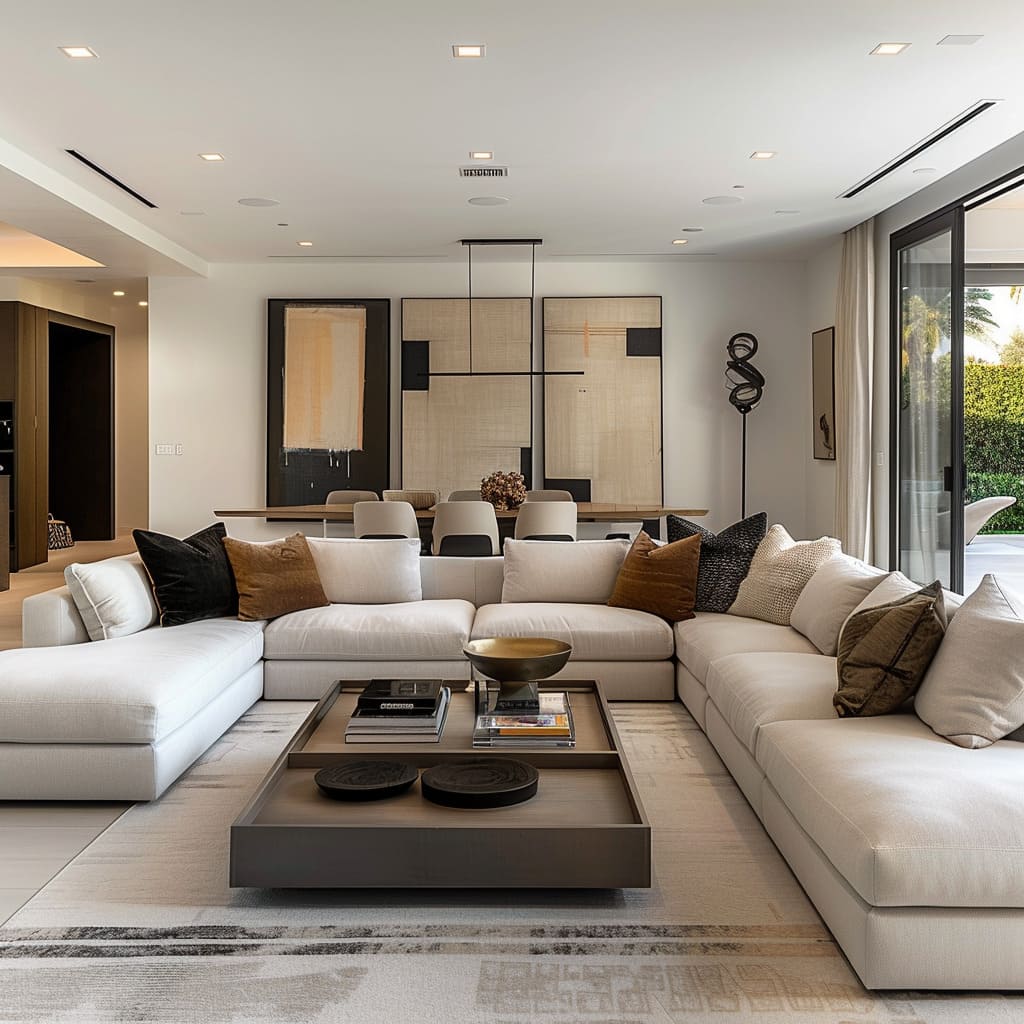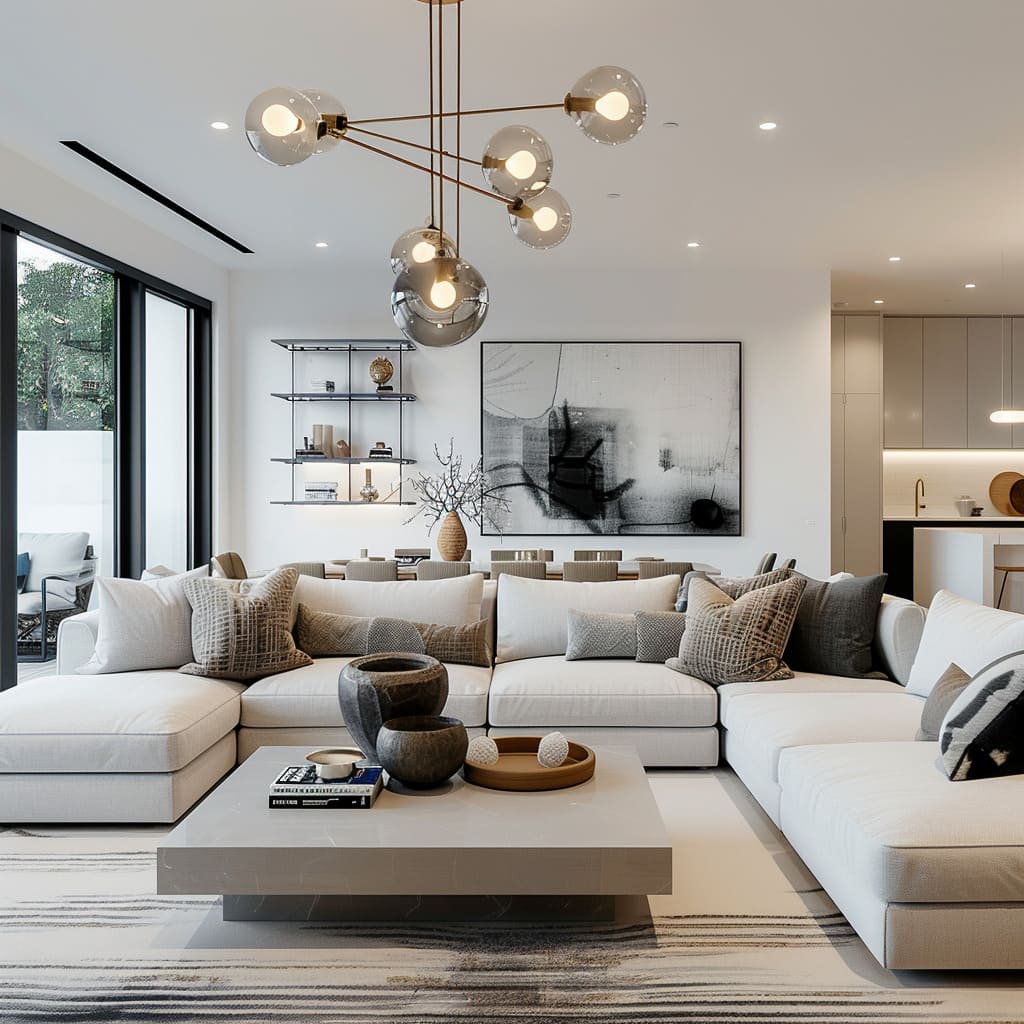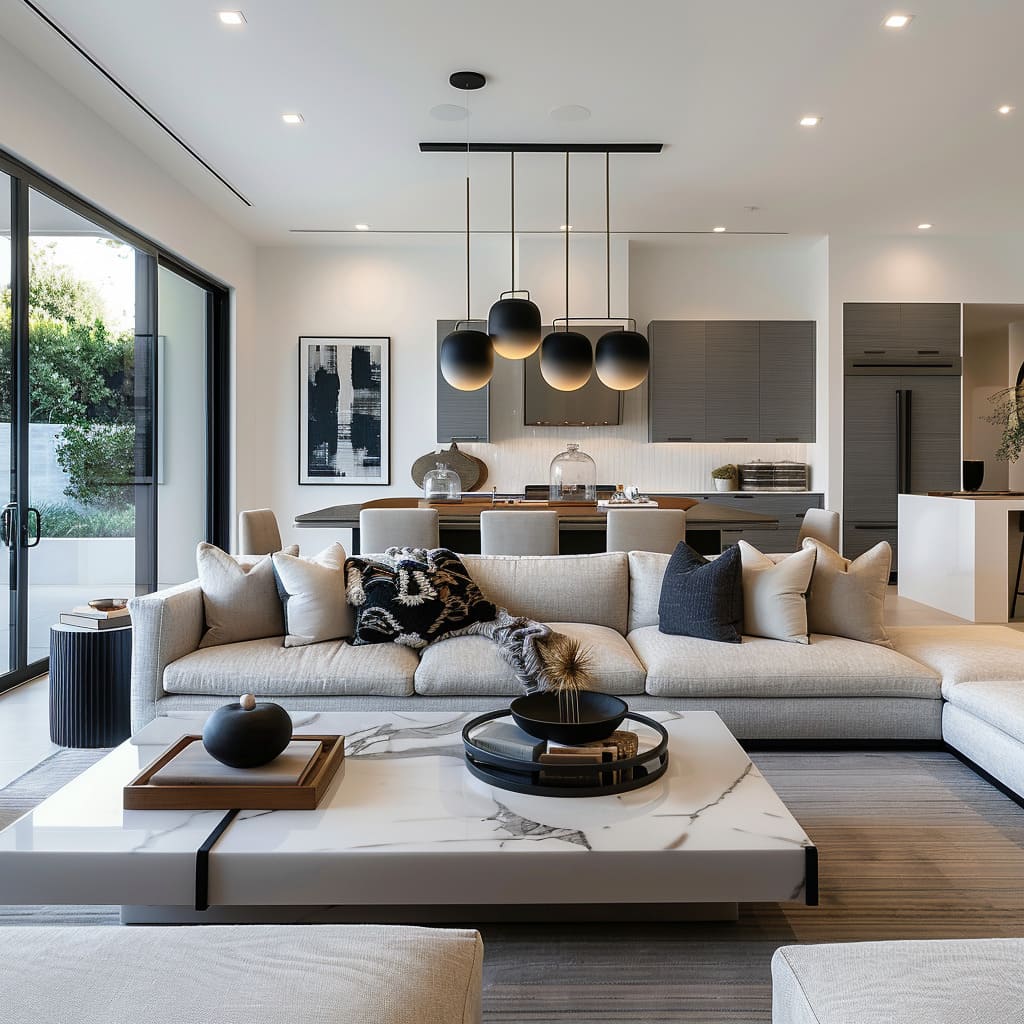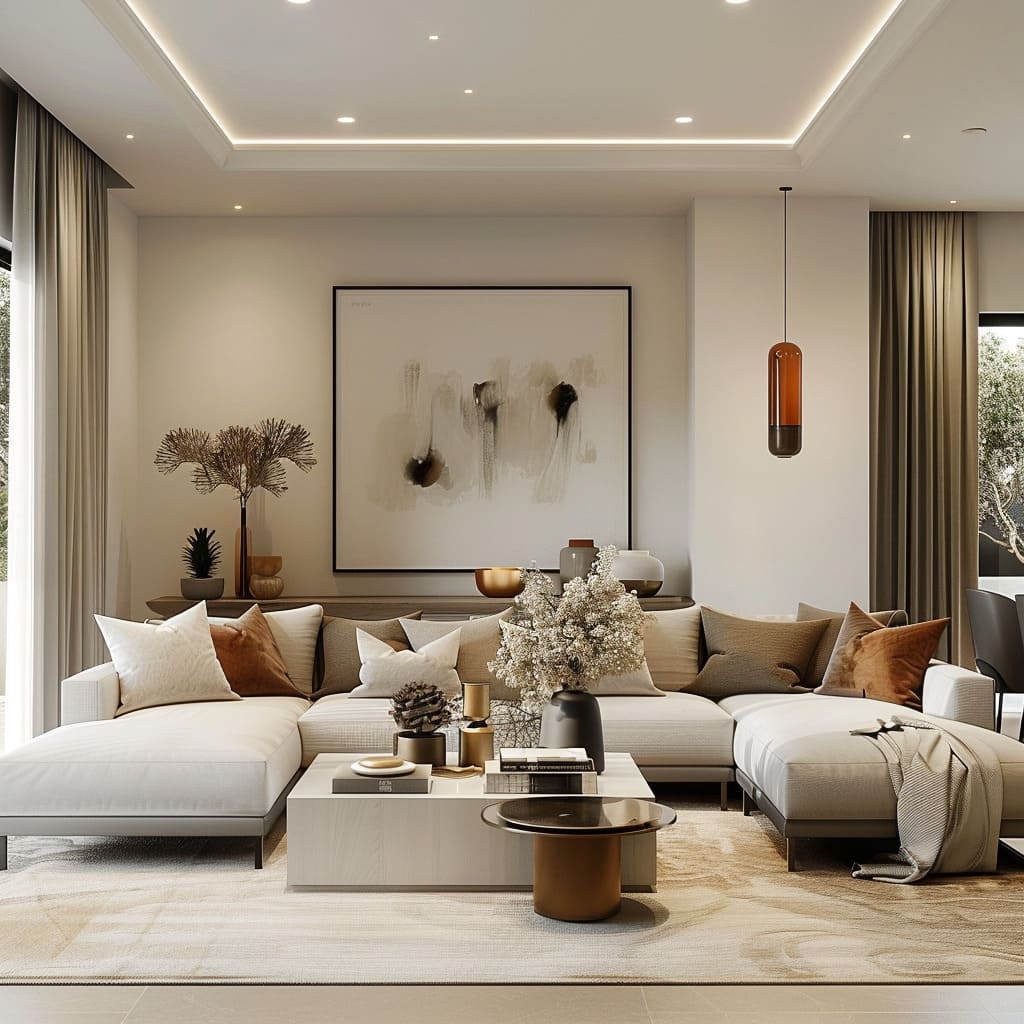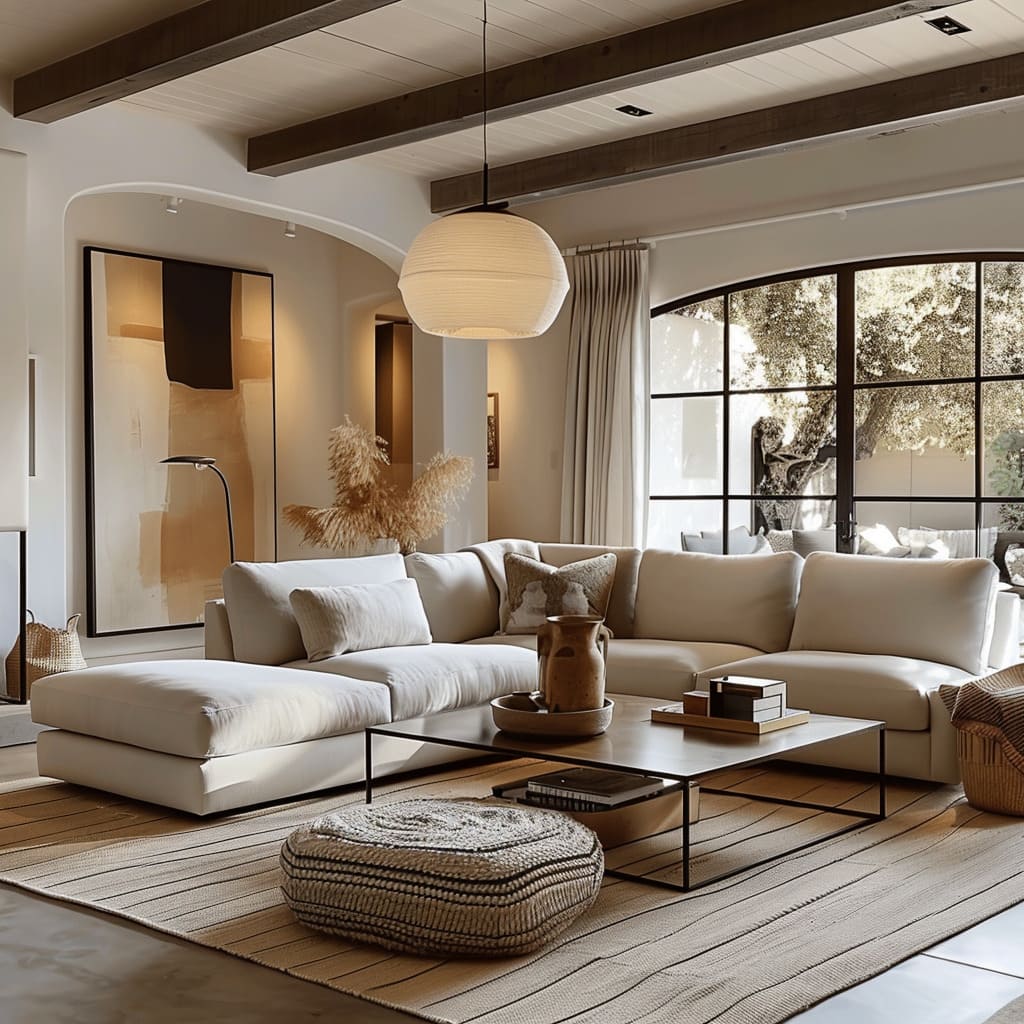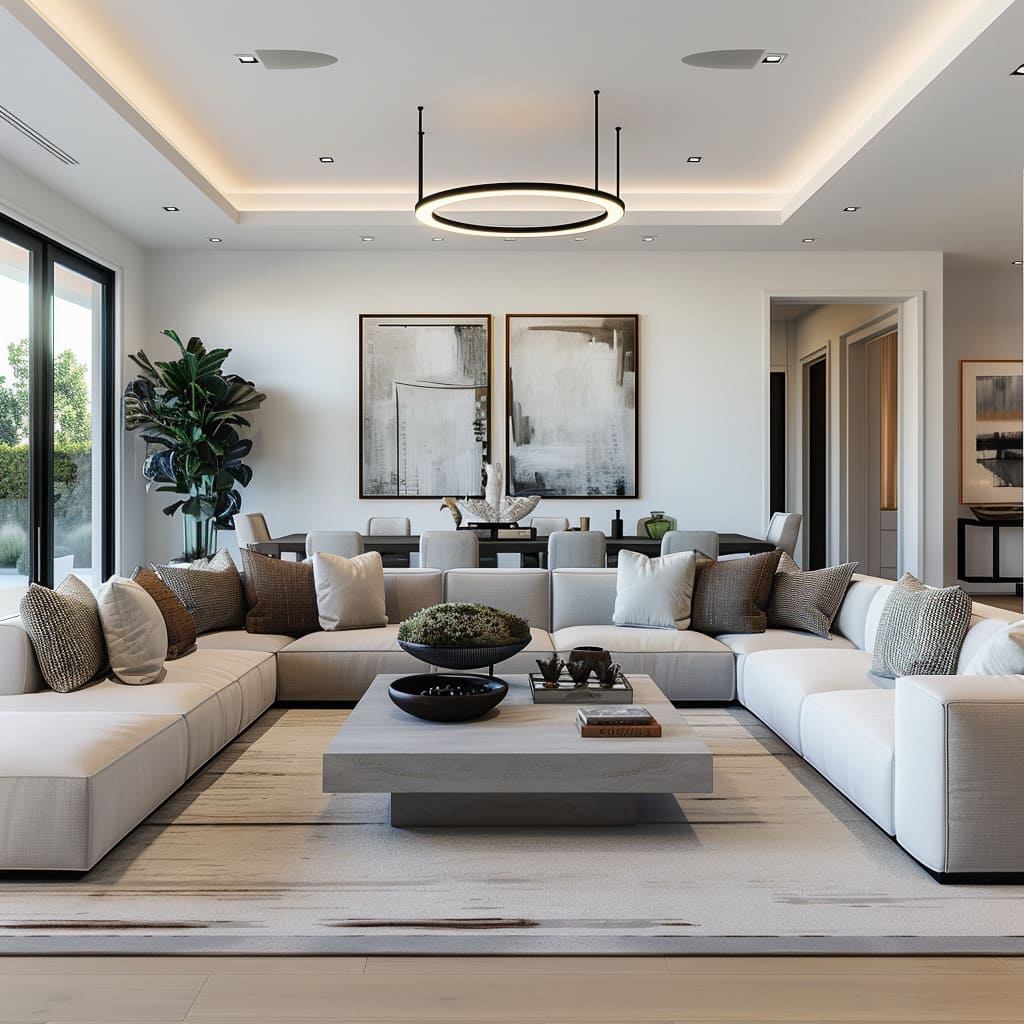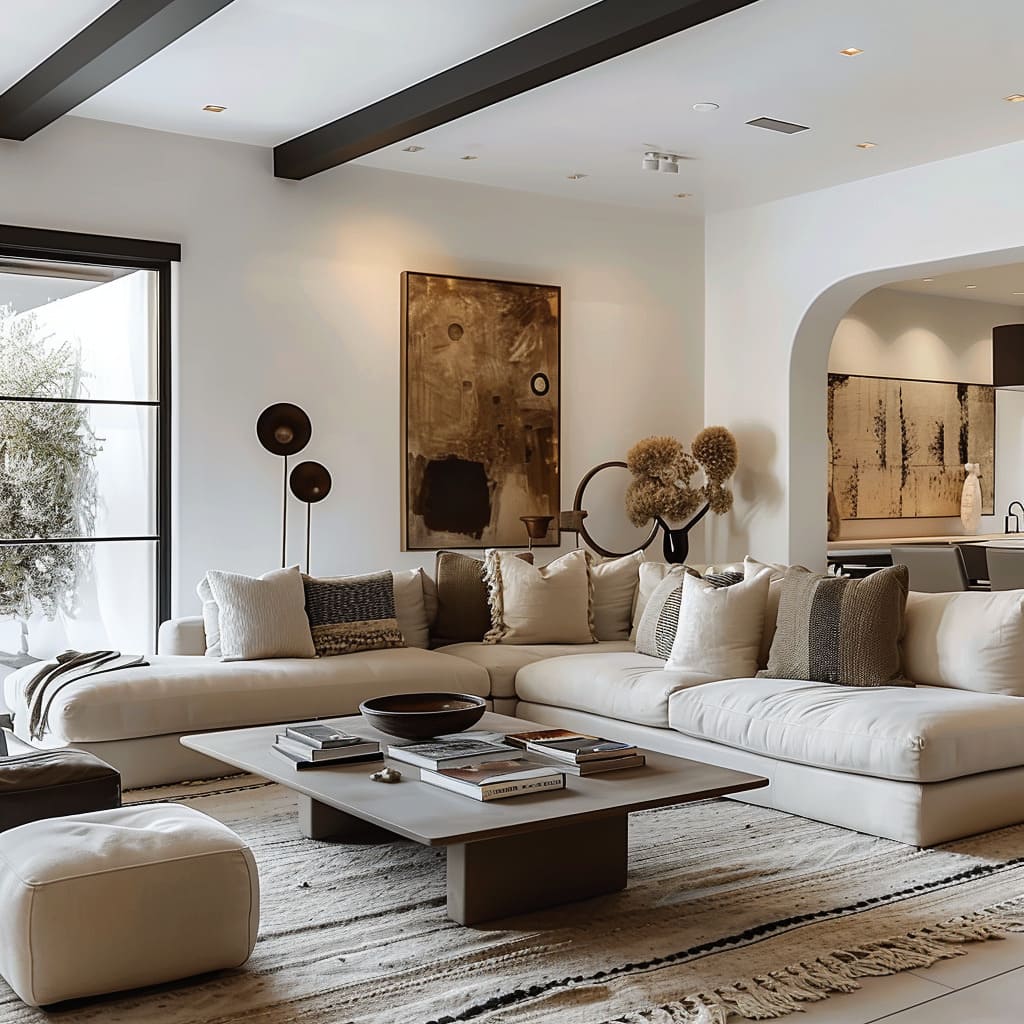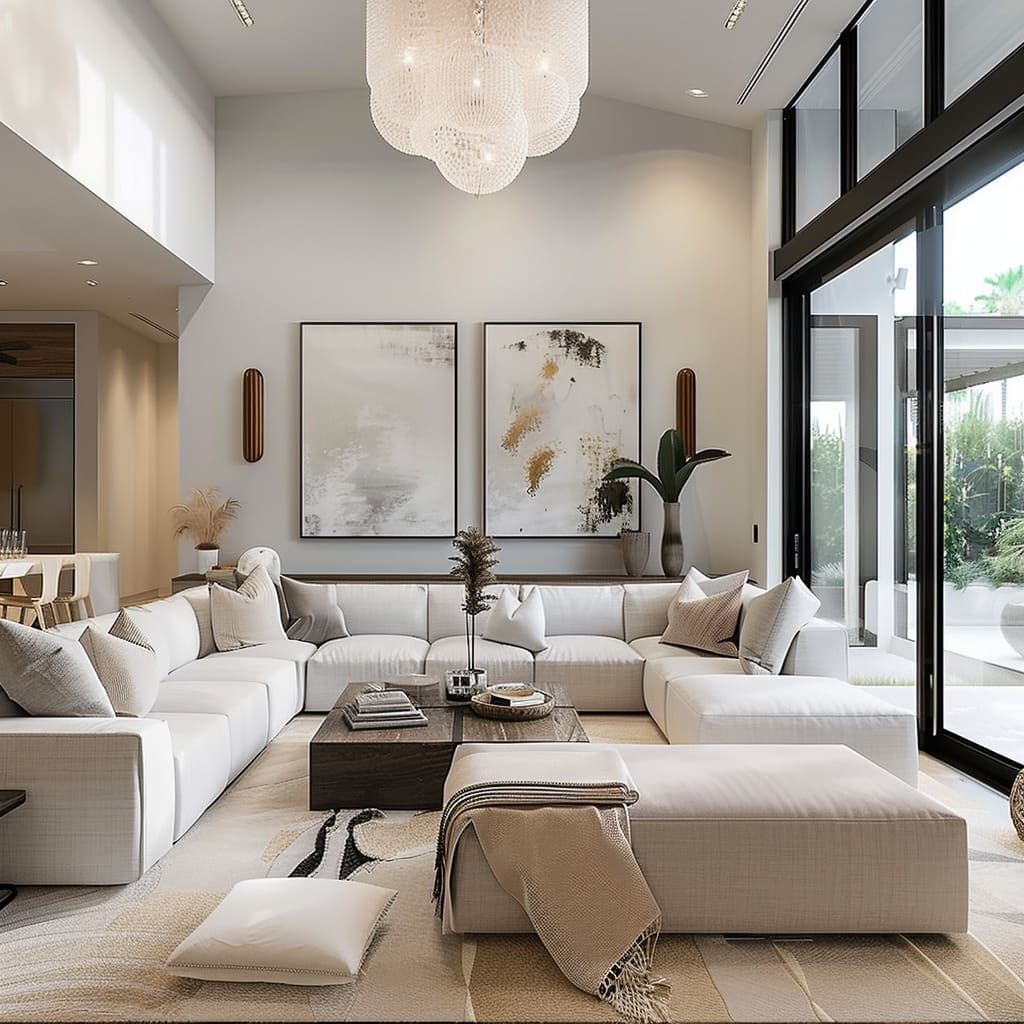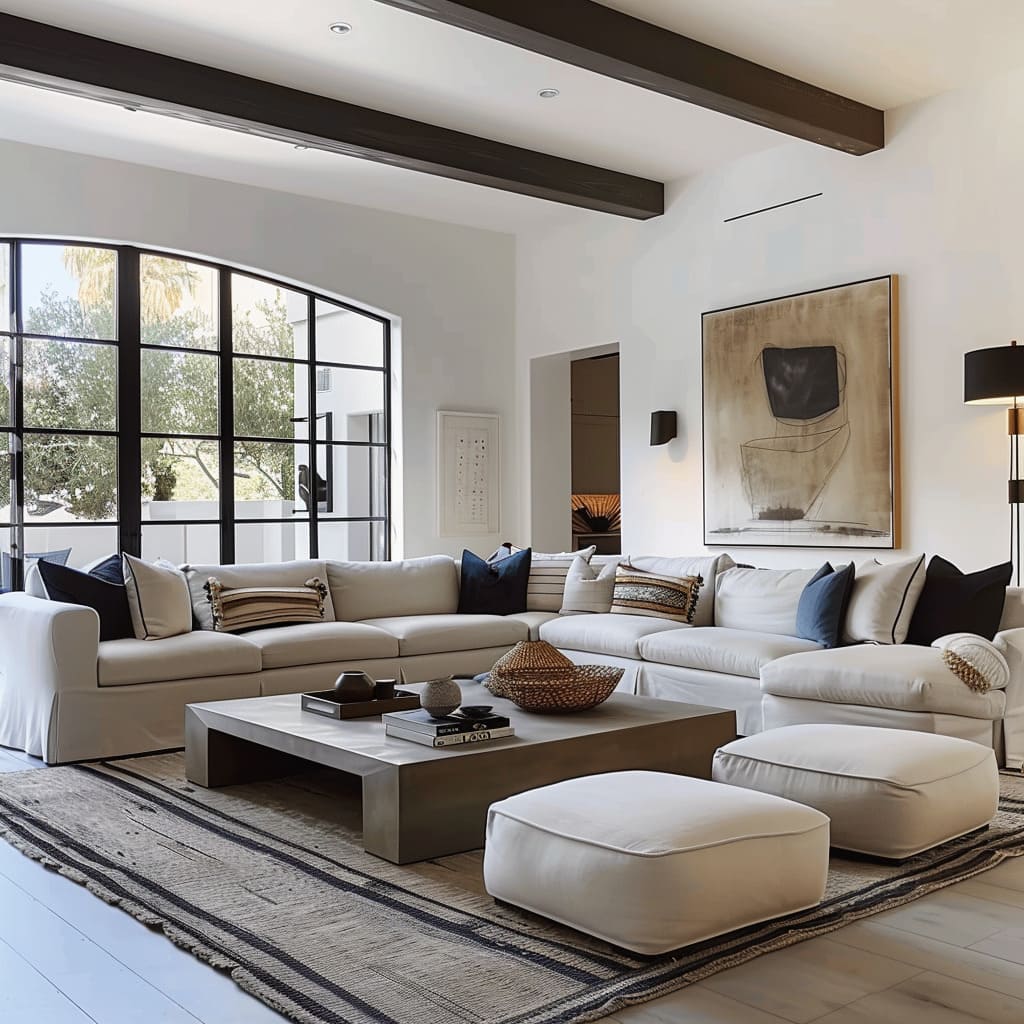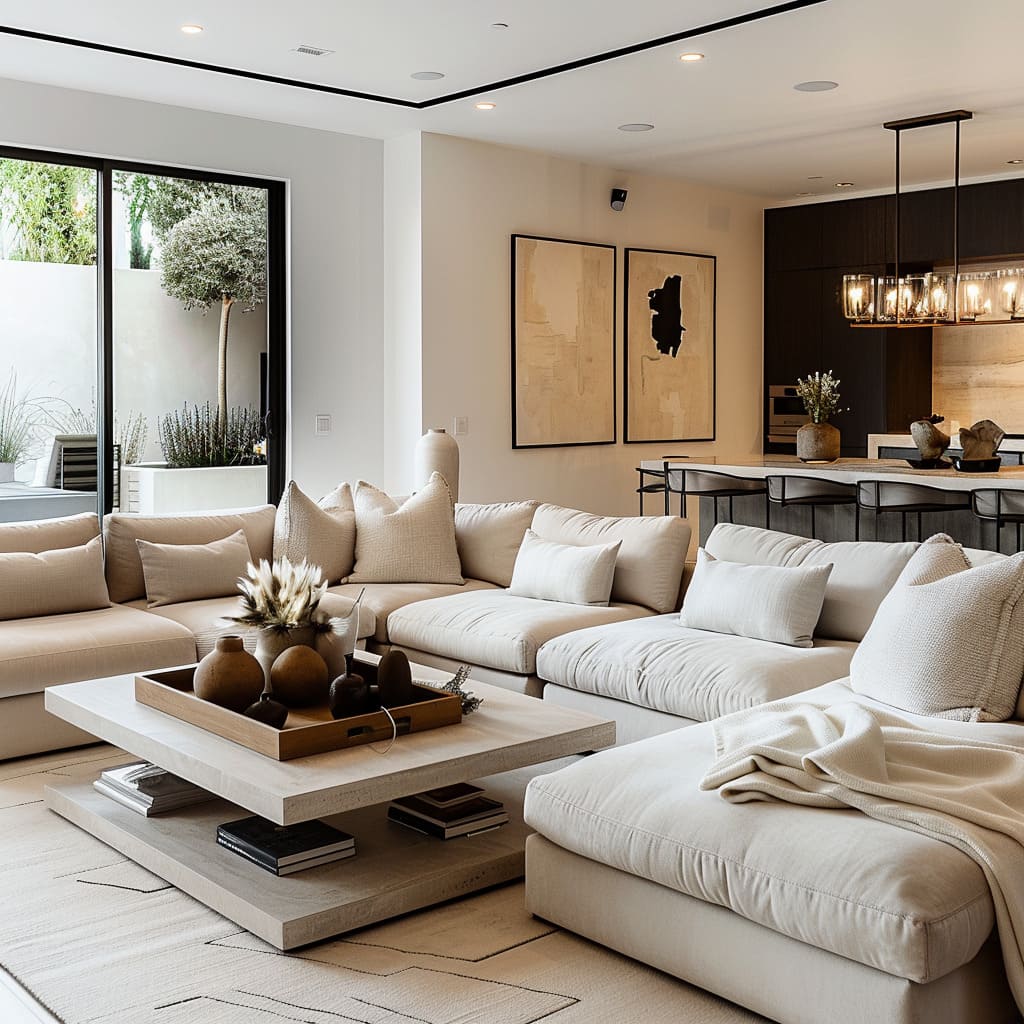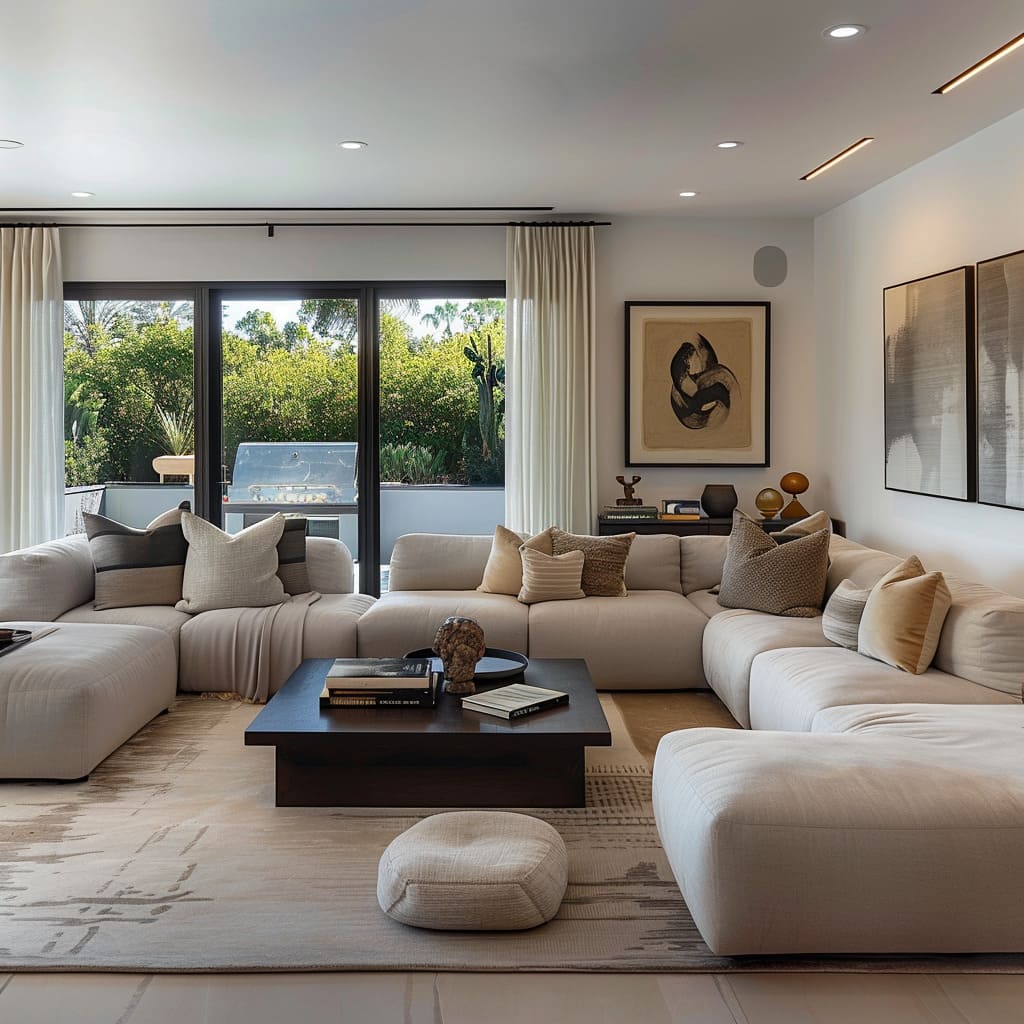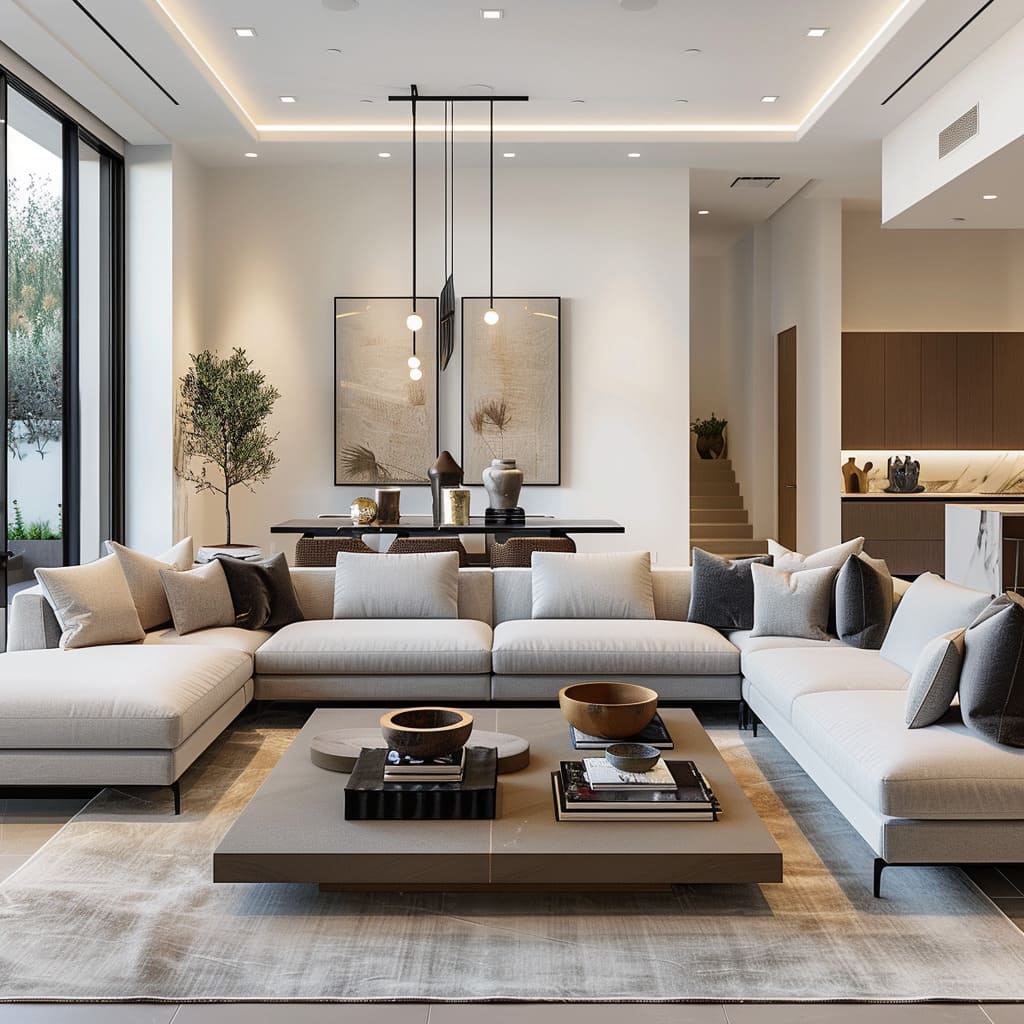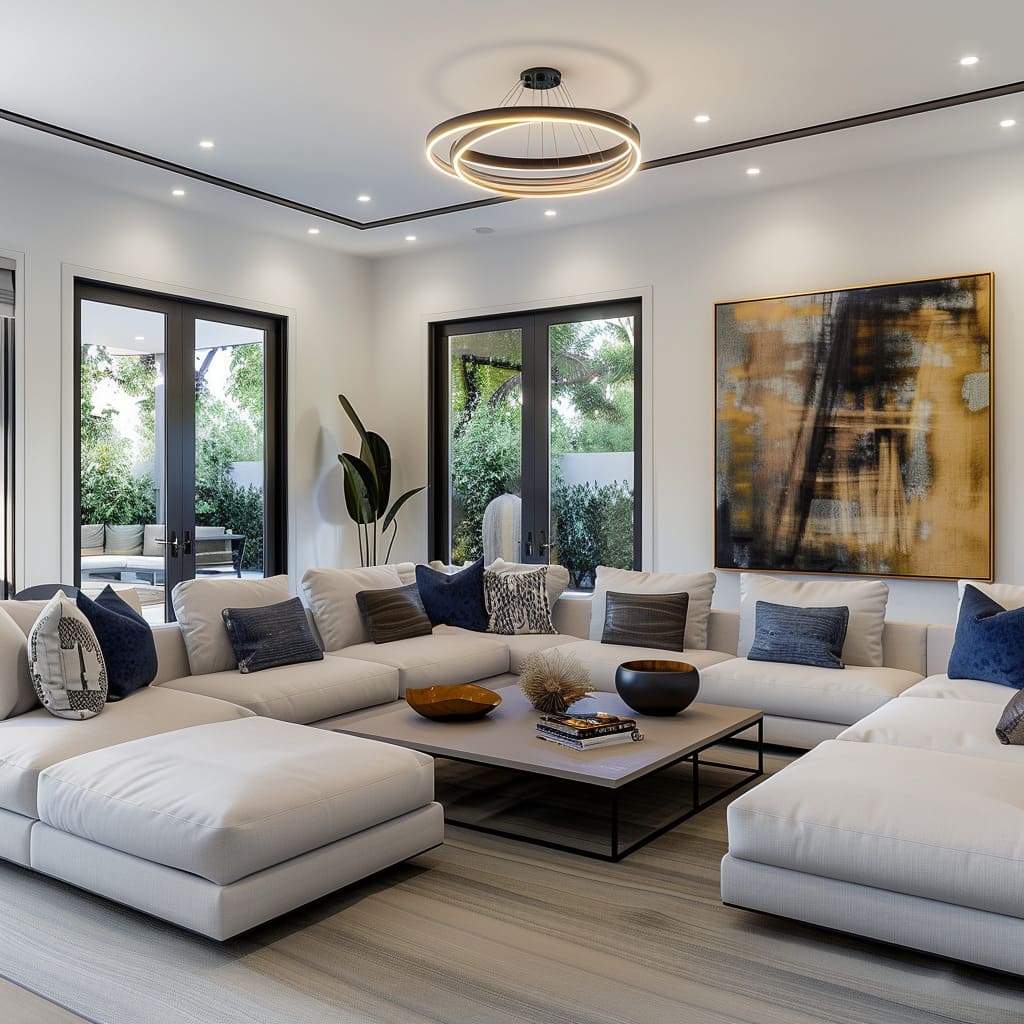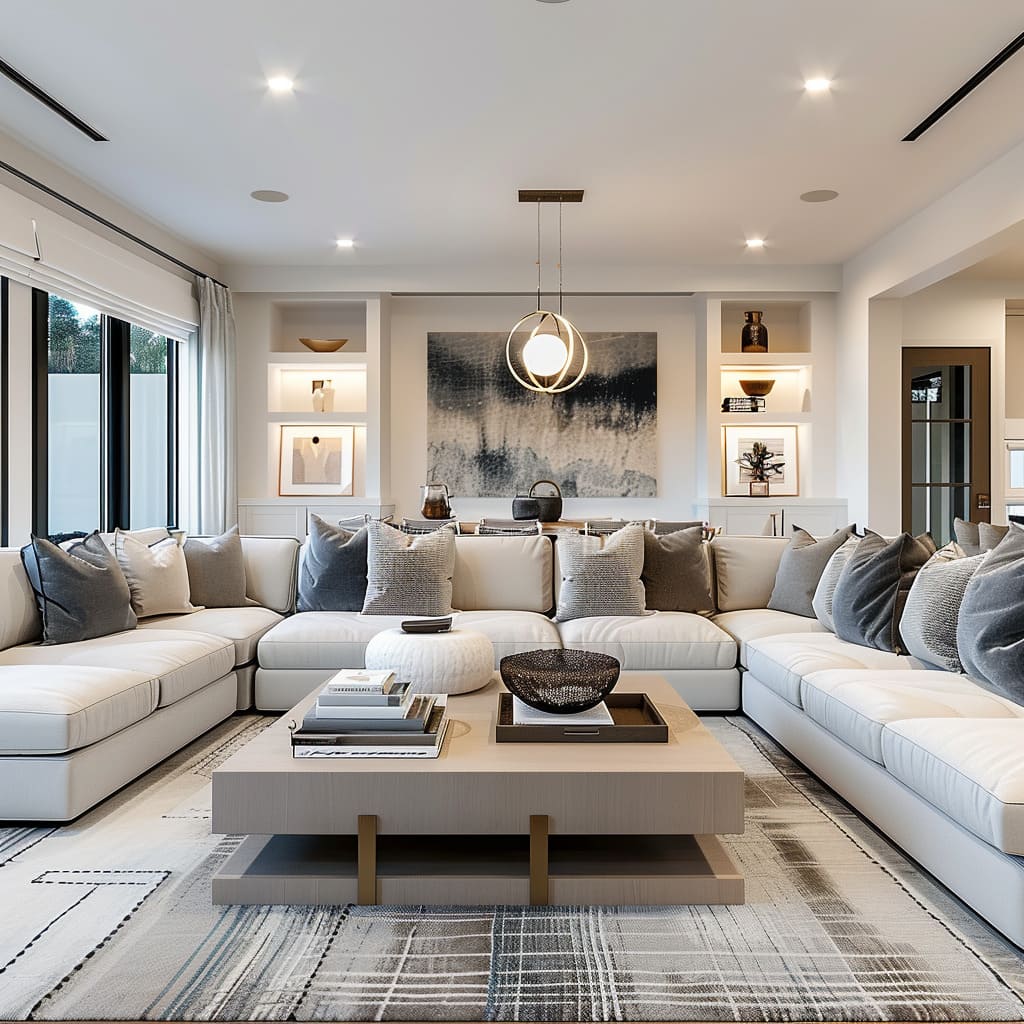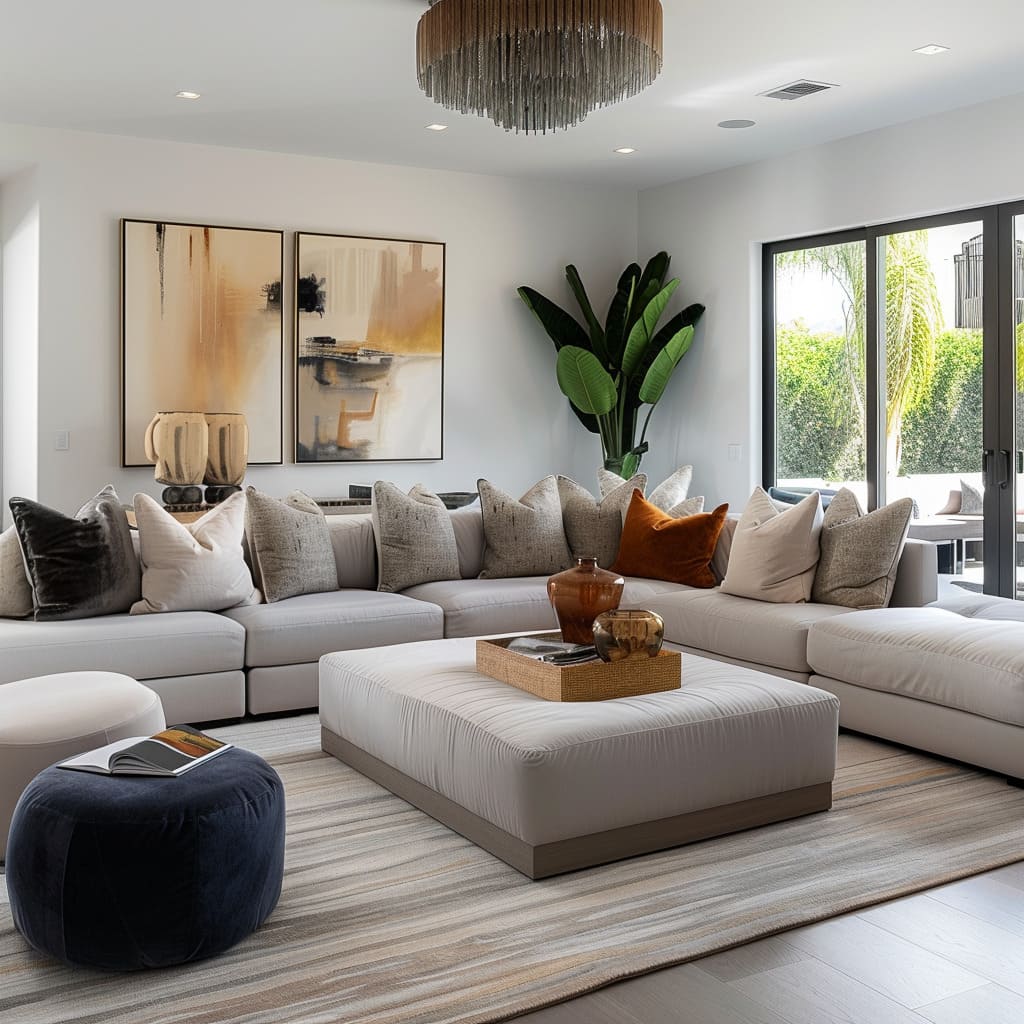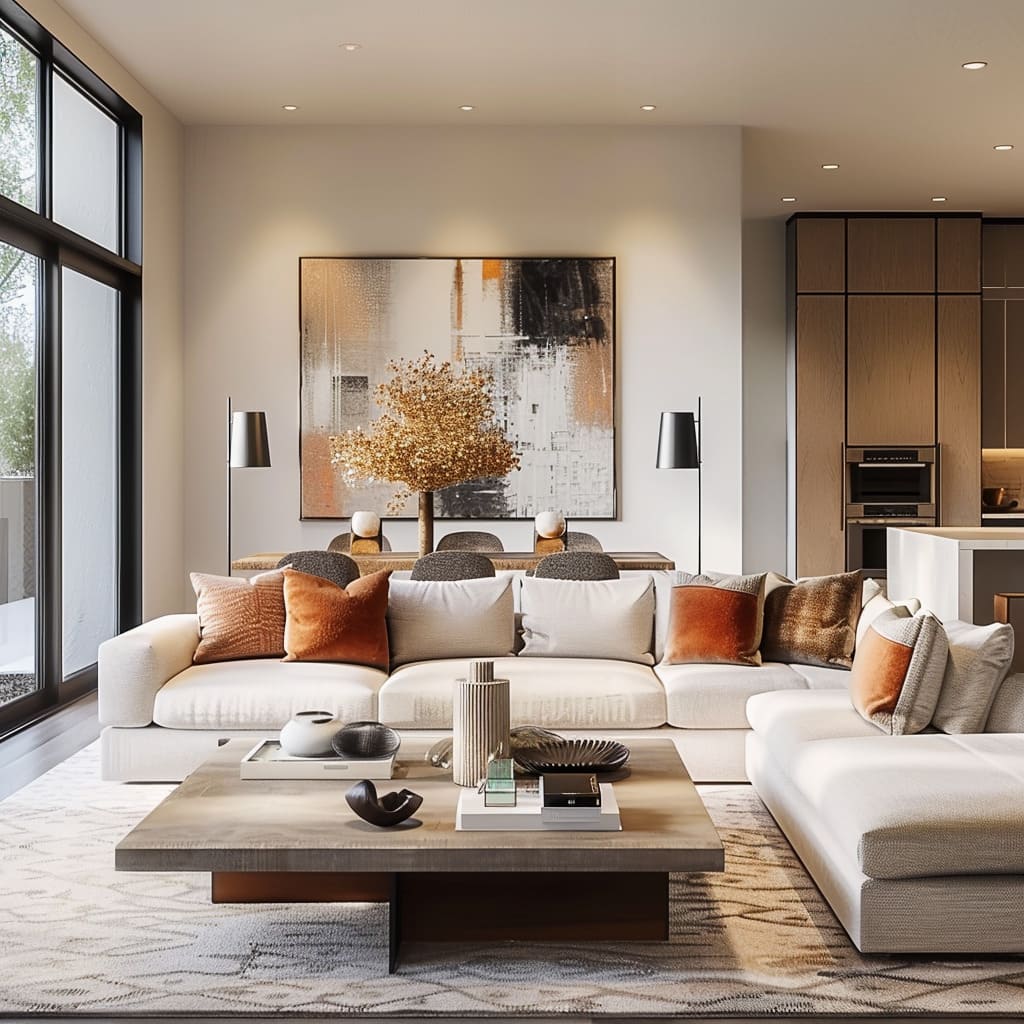Navigating the field of contemporary interior design, a delicate dance between form and function unfolds, creating spaces that are as aesthetically pleasing as they are practical. This article delves into the intricate layers of modern design, exploring how each element—from the strategic use of light to the thoughtful integration of technology—contributes to creating environments that are not just spaces but experiences.
As we peel back the layers of architectural dynamics, material interplay, and meticulous detailing, we uncover the essence of contemporary design: a celebration of harmony where every detail, no matter how small, plays a crucial role in the overall composition. Join us on a journey through the nuances of modern interiors, where the marriage of form and function results in a symphony of spaces that are both enchanting and embracing.
Architectural and Spatial Dynamics
Architectural elements and spatial arrangements set the stage in contemporary interior design. An emphasis on form and structure plays a critical role in establishing the space’s character and flow.
Emphasis on Vertical Lines
The architectural prowess of these designs is evident in the vertical elements that not only craft a visual journey for the eyes but also infuse the spaces with a sense of grandeur. From floor-to-ceiling windows to tall, slender plant elements, these features accentuate the height and volume of the rooms, making them appear more spacious and open.
Asymmetrical Layouts
Eschewing traditional symmetry, these spaces embrace asymmetry, bringing an energetic and contemporary vibe. This dynamic is often achieved through the arrangement of furniture, the positioning of art, and even the layout of the room itself, presenting a visual tension that is both engaging and thought-provoking.
Creative Ceiling Design
The fifth wall, or the ceiling, receives as much attention as the others in these spaces. Whether it’s through the incorporation of geometric cut-outs, statement lighting fixtures, or varying levels and depths, the ceilings play an instrumental role in defining the zones and ambiance of each space.
Floating Units
The illusion of weightlessness is a recurrent theme, as seen in the wall-mounted or cantilevered units that serve both function and form. These pieces are often streamlined and sleek, freeing up the floor space and contributing to a more expansive visual field.
Slender Furniture Legs
The furniture, often resting on delicate legs, seems to hover gracefully above the ground. This not only provides a sense of lightness but also allows for an unobstructed view across the floor, enhancing the openness of the design.
The space under the furniture becomes a part of the overall design, contributing to a feeling of spaciousness.
These characteristics highlight the intentional use of architectural elements and spatial dynamics to create environments that are visually stimulating and thoughtfully composed. The focus on verticality, asymmetry, innovative ceiling treatments, floating elements, and slender supports work in concert to create a sense of rhythm and flow within the space, providing an underpinning for the contemporary aesthetic.
Light and Transparency
The interplay of light and transparency is a quintessential aspect that breathes life into a space. These elements are masterfully manipulated to craft an ambiance that is both welcoming and illuminating.
Window Treatments
The careful selection of window treatments offers both aesthetics and functionality. Sheer curtains or roller blinds are chosen to diffuse the daylight gently, bathing the interiors in a soft glow while ensuring privacy.
The fabrics and materials are picked not only for their light-filtering qualities but also for their ability to integrate seamlessly into the overall design narrative.
Unadorned Windows
Maximizing the infusion of natural light, the windows are often unobstructed, allowing clear views and daylight to become a central feature of the interior landscape. This design choice underscores a sense of openness and connection with the outdoors, making the rooms feel larger and more inviting.
Streamlined Window Frames
The window frames themselves are a testament to minimalist design, eschewing ornate details for clean, straight lines that draw the eye outward. The simplicity of the frames supports a less-is-more philosophy, ensuring that the view outside takes precedence.
Minimalist Window Hardware
Attention to detail is evident in the discreet window hardware, which is designed to be functional without disrupting the visual flow of the space. Handles and locks are often flush with the frames or finished in colors that meld with the surroundings, ensuring they don’t distract from the overall clean lines.
Creative Use of Mirrors
Beyond their practical use, mirrors become a design element that amplifies light and vista. Placed opposite windows or in darker corners, they capture and reflect the outdoors, effectively doubling the visual space and enhancing the luminosity of the room.
The shape and framing of the mirrors are as thoughtfully considered as any piece of art in the room.
The marriage of light and transparency in these interiors is not accidental; it is a conscious design strategy that leverages the natural ambiance to create a serene and restful environment. From the way natural light dances across the surfaces to how artificial lighting is woven into the fabric of the space, every aspect of illumination is considered to enhance the sense of openness and clarity within the home.
Color and Texture Harmony
In contemporary interiors, color and texture are harmonized to create a sensory experience that is balanced and aesthetically pleasing. The subtle coordination of these elements results in a tranquil yet engaging environment.
Accent Colors
The strategic use of accent colors breathes life into the predominantly neutral settings. These are often found in select pieces that stand out without overwhelming—like a vibrant cushion or a bold piece of art—introducing personality and focal points to the rooms.
Monochromatic Schemes
The art of using varying shades within a single hue is perfected in these spaces, achieving a sophisticated and unified aesthetic. By employing textures and subtle tonal differences, the monochromatic schemes avoid monotony and instead offer a rich, layered look.
Muted Wall Colors
The walls, adorned in soft, muted tones, provide the perfect canvas for the interplay of light and shadow, offering a restful backdrop that allows furniture and artwork to stand out. These hues support a timeless appeal, ensuring the spaces won’t feel dated as trends change.
Unified Color for Accessories
Accessories become the harmonious notes that tie the visual symphony together, with their colors echoing those found in larger design elements. Whether it’s the earthy tones of a vase or the muted metal of a sculpture, they contribute to a cohesive narrative.
Focused Use of Color
The deliberate placement of color is akin to punctuation in a sentence. It emphasizes, it underscores, it articulates.
Whether it’s a throw pillow, a decorative object, or a splash of color in a painting, these are the elements that guide the eye and define the spaces, bringing balance and interest to the overall design.
The considered application of color and texture in these contemporary spaces underpins the entire design philosophy, ensuring that each area offers both comfort and visual delight. This approach leads to environments that are not only beautiful to look at but also deeply resonant on a sensory level, encouraging both calm and creativity in their occupants.
Art and Furnishing Dialogue
Furniture and artwork do not merely fill space; they communicate and engage in dialogue with their surroundings. Each piece is thoughtfully selected to resonate with the space’s overarching narrative.
Low-profile Furniture
The chosen furniture, with its low-to-the-ground orientation, invites an openness in the room, enabling sightlines to remain clear and continuous. This unobtrusive approach to design ensures that each item of furniture complements rather than competes with the spatial flow, encouraging a sense of calm and order.
Large-scale Artwork
The carefully chosen oversized artwork acts not just as decor but as a statement of identity for the space. It commands attention while harmonizing with the scale of the room, creating a striking visual impact that is proportional and considered, rather than overwhelming or domineering.
Contemporary Art Selection
The contemporary pieces selected for these spaces are more than mere aesthetic choices; they are reflective of a modern sensibility that values bold expression and abstract thought. The art often carries a narrative, a splash of color, or a geometric pattern that adds depth and context to the minimalist surroundings.
Modular Furniture
The inclusion of modular pieces speaks to a modern lifestyle that values flexibility and customization. These versatile elements can be reconfigured to suit different occasions, reflecting an understanding that contemporary living is dynamic and ever-changing.
Varied Pillow Sizes
The assortment of pillow sizes introduces an element of play and versatility to the seating arrangements. This variety allows for personal comfort and aesthetic preference, providing a casual and accessible way to alter the room’s texture and color palette.
In these spaces, the relationship between art and furnishings is symbiotic, each enhancing the other’s presence.
The low-profile furniture serves as a quiet foundation upon which the more expressive elements, like the artwork and varied textiles, can make their statement. This careful orchestration of furniture and art creates a harmonious ensemble that is both visually cohesive and emotionally resonant, turning each room into a living gallery that reflects the tastes and philosophies of its inhabitants.
Detailing and Accessories
Details and accessories are not afterthoughts but integral parts of the design process. They are the subtle nuances that complete the visual symphony.
Recessed Shelving
Built-in shelving is seamlessly integrated into the walls, maintaining the sleek profile of the space. These shelves serve a dual purpose: they are functional without encroaching on the living area and offer an architectural element that enhances the room’s dimensionality.
Ambient Lighting
The lighting scheme is meticulously crafted to create an inviting atmosphere through layers of light. Strategically placed fixtures provide a warm glow that can be adjusted to set the mood, illuminating the space without harshness or glare.
Quiet Hardware
Hardware fixtures, from door handles to cabinet pulls, are chosen for their ability to merge into the design landscape quietly. These pieces are often finished in muted tones that complement the room’s color palette, reaffirming the design’s cohesion and sophistication.
Smart Home Features
Contemporary living is exemplified by the discreet integration of smart technology. Thermostats, lighting, and entertainment systems are often controlled remotely, providing convenience and a streamlined aesthetic where technology enhances lifestyle without dominating the decor.
Understated Bedding
The luxury of the bedding is expressed in its quality and texture, rather than ostentatious patterns or colors. Premium fabrics in monochrome or gentle patterns offer a restful and visually calming presence, contributing to the serene atmosphere of the bedroom.
These elements of design are the finishing touches that elevate a space from merely functional to truly harmonious. Detailing and accessories, when chosen with intention and care, speak to the thoughtfulness of the design and the lifestyle of the inhabitants, ensuring that every aspect of the home environment serves both purpose and pleasure.
Integration and Functionality
The seamless integration of functional elements within the aesthetic framework is a hallmark of contemporary design. This blend ensures that the space is not just visually appealing but also ergonomically viable.
Concealed Lighting
Concealed lighting plays a crucial role in shaping the ambiance of the space, providing illumination without the intrusion of visible fixtures. This type of lighting is integrated into the structure, such as behind panels or within coves, casting a soft glow that enhances the room’s dimensions without disrupting its visual flow.
Inlaid Flooring
Inlaid flooring introduces an element of artistry and detail to the space, offering a subtle yet impactful design feature. This technique involves embedding materials into the floor in patterns or designs, adding a layer of texture and sophistication without overwhelming the overall aesthetic.
Open Shelving
Open shelving is strategically employed to blend functionality with design. These shelves provide a platform for displaying cherished items, books, or decorative pieces, contributing to the room’s personality.
The careful curation of these items ensures that the shelves are a reflection of the occupants’ tastes and interests while maintaining a sense of order and openness.
Deliberate Accessorizing
Each accessory is selected for its ability to complement and enhance the space.
Whether it’s a sculptural piece, a vase, or a functional item like a clock, the accessories are more than mere decorations; they are integral components of the design, chosen for their form and function. This thoughtful approach to accessorizing helps maintain a clutter-free environment that is both stylish and livable.
The integration of functionality and aesthetics is paramount, ensuring that every element serves a purpose and contributes to the overall harmony of the space. This philosophy extends to every detail, from the way lighting is incorporated into the architecture to how accessories are chosen and arranged.
The result is a living environment that is not only beautiful to look at but also comfortable and practical for daily life.
In conclusion, the essence of contemporary interior design lies in its masterful blend of form and function, where every element, from the grand architectural features to the minutest accessories, is a testament to thoughtful curation.
This design philosophy goes beyond mere aesthetics, embracing a holistic approach that ensures spaces are not only visually captivating but also inherently practical and welcoming. The careful orchestration of various design elements results in environments that resonate with harmony and elegance, reflecting a deep understanding of the interplay between space, light, texture, and color.


